Learning Alpine Mountaineering
What it's like to take the Alpine Institute's Alpine Mountaineering and Technical Leadership
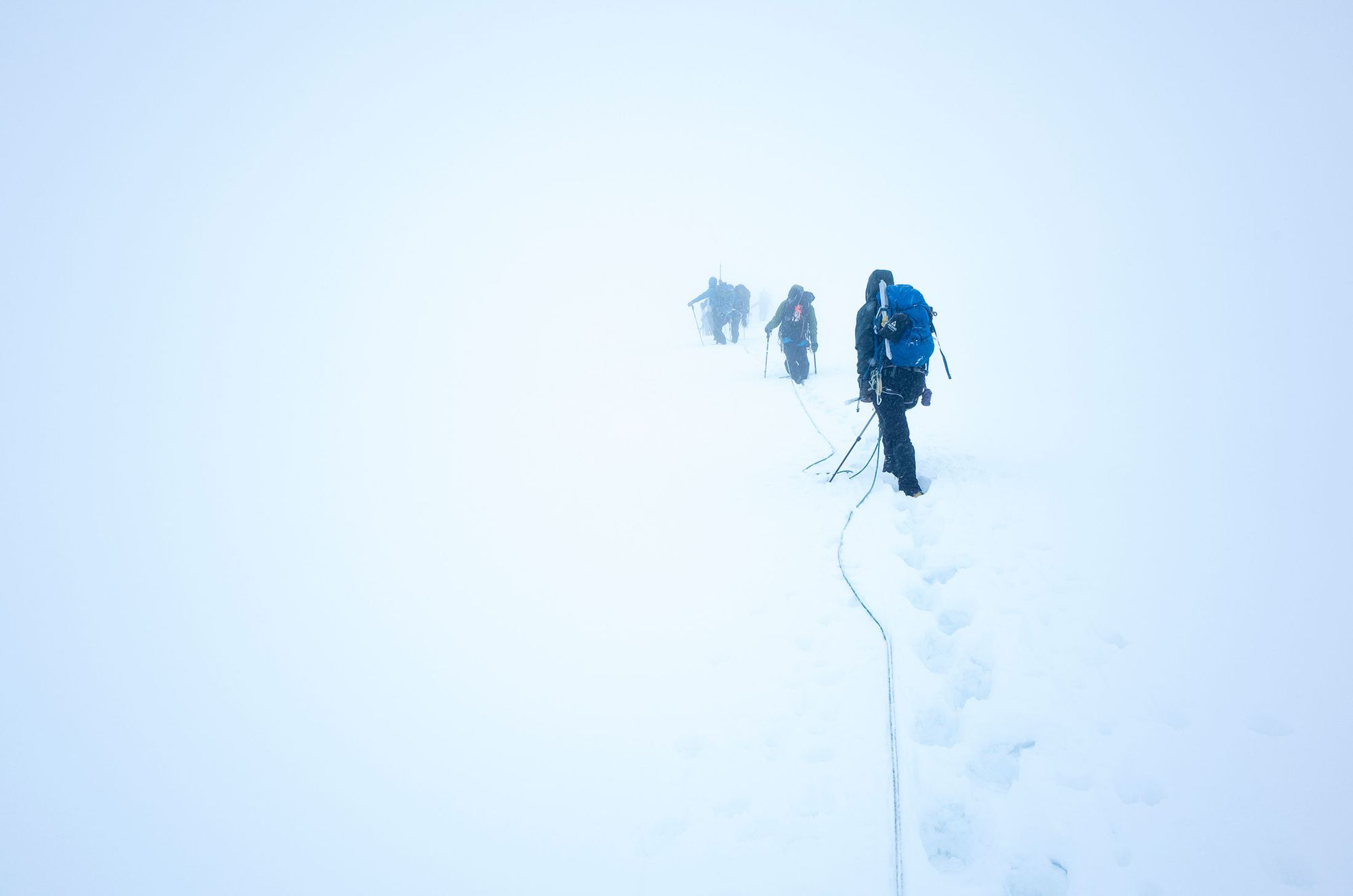
Originally published May 22, 2017
What’s the appeal of mountaineering?
Why would you willingly sleep on the ground, hike for hours in winter weather, and eat freeze dried meals that don’t expire until 2047? …especially when you could be sitting on a warm tropical beach, drink in hand, for less money.
The appeal of trekking and mountaineering can be hard to explain if you’ve never experienced them, but I’ll go out on a ledge and give it a try.
Here’s my motivation…
- I get the chance to live more intensely. The adrenaline, camaraderie, and absence of digital communications make me feel more alive.
- My life becomes more meaningful. I derive more value out of life when pursuing goals or engaging in activities that demand a decent amount of effort, dedication, and sacrifice.
- Walls in my path force me to increase my mental and physical resiliency. If I want to tackle difficult trails, routes, and peaks, I have to rigorously train both my body and mind. I have to stay sharp and continually assess my surroundings and personal capabilities. Day by day, this turns me into an all-around stronger person.
- I gain a sense of accomplishment. It's hard to beat how you feel after achieving a goal – a destination reached or technical skill mastered – through honest, hard work.
- I am awarded with exceptional photography opportunities. Images of people pursuing objectives and overcoming adversity in dangerous, beautiful environments are compelling.
Why Alpinism?
Starting with my Everest (EBC) and Kilimanjaro trips last year, I’ve taken a minimalist approach to trekking and camping. As much as possible, I try to stick with the essentials. Because photography remains a key reason for many of these trips, I still bring a camera. However, rather than lug around a bulky DSLR, I pack the pocket-sized Ricoh GRII. All of the photos that appear in this post were shot on the Ricoh or with my iPhone.
For the 12 day trek to EBC, my minimalist approach meant I was able to fit all my clothes and gear in a 30L pack. For Kilimanjaro, a 40L. Somehow I even managed to squeeze a puffy and down sleeping bag into both sacks. In terms of food, though, I only carried snacks. Meals were purchased at tea houses en route to EBC and carried by porters up Kilimanjaro.
After these treks and a successful trip to photograph the ice caves of Mendenhall Glacier, I decided to step up to more technical mountaineering. This was something I viewed as more challenging and real adventure – the risk and expertise required were much higher.
In particular, I was drawn to Alpine mountaineering – a style that dictates a light and fast approach. The idea is that you want to move rapidly through areas with objective hazards – bad weather, rockfall, avalanches, etc. The more weight you carry, the slower and less agile you are when climbing.
To get up to speed with best practices and find some competent mountaineering partners for future trips, I spent the first two weeks of May participating in the Alpine Institute’s Alpine Mountaineering and Technical Leadership Part 1 (AMTL1) course.
The rest of this post covers the details of that trip.
Keep it under 40lbs and 40L.
That was my packing goal for my AMTL1 course. I ended up right around that number when I added the tent, 2L of water, food for 4 days, and snowshoes. Even carrying a 60m climbing rope, the total weight never surpassed 50lbs.
In hindsight, I probably should have gone with a 60L pack to fit my helmet inside and more easily affix external gear like snowshoes.
Plan the meals.
When you can’t visit Safeway every night, you actually have to plan multiple days worth of meals in advance. My own approach was based on previous trekking experience and info I read in Extreme Alpinism.
Here’s my list for a 3 day 2 night trek or climb:
- 12 GUs – Eating GU, rather than solid food, during a climb maximizes performance by ensuring as little blood as possible leaves your muscles for your digestive system.
- 1 quart-sized bag of sunflower seeds and almonds – After a long day of climbing, munching on these will provide a good number of calories and stimulate the appetite.
- 3 2-packs of Bavarian Meats landjaeger – These German sausage sticks are high in protein and fat. There's a Bavarian Meats shop over in Pike's Place market in Seattle.
- Cliff Bloks – These gummies with small amounts of caffein are useful if you hit a wall or just want a pick-me-up while climbing or hiking.
- 2 freeze dried dinners – Freeze dried food is a great way to maximize calories while saving space in your bag.
- 2 bananas – "Real food" for breakfast is awesome. You won't regret the extra pack weight.
- 6 Cliff Base or Muscle Milk protein bars – I use these for breakfast and snacks at the end of the day. They're also useful if you hit a wall.
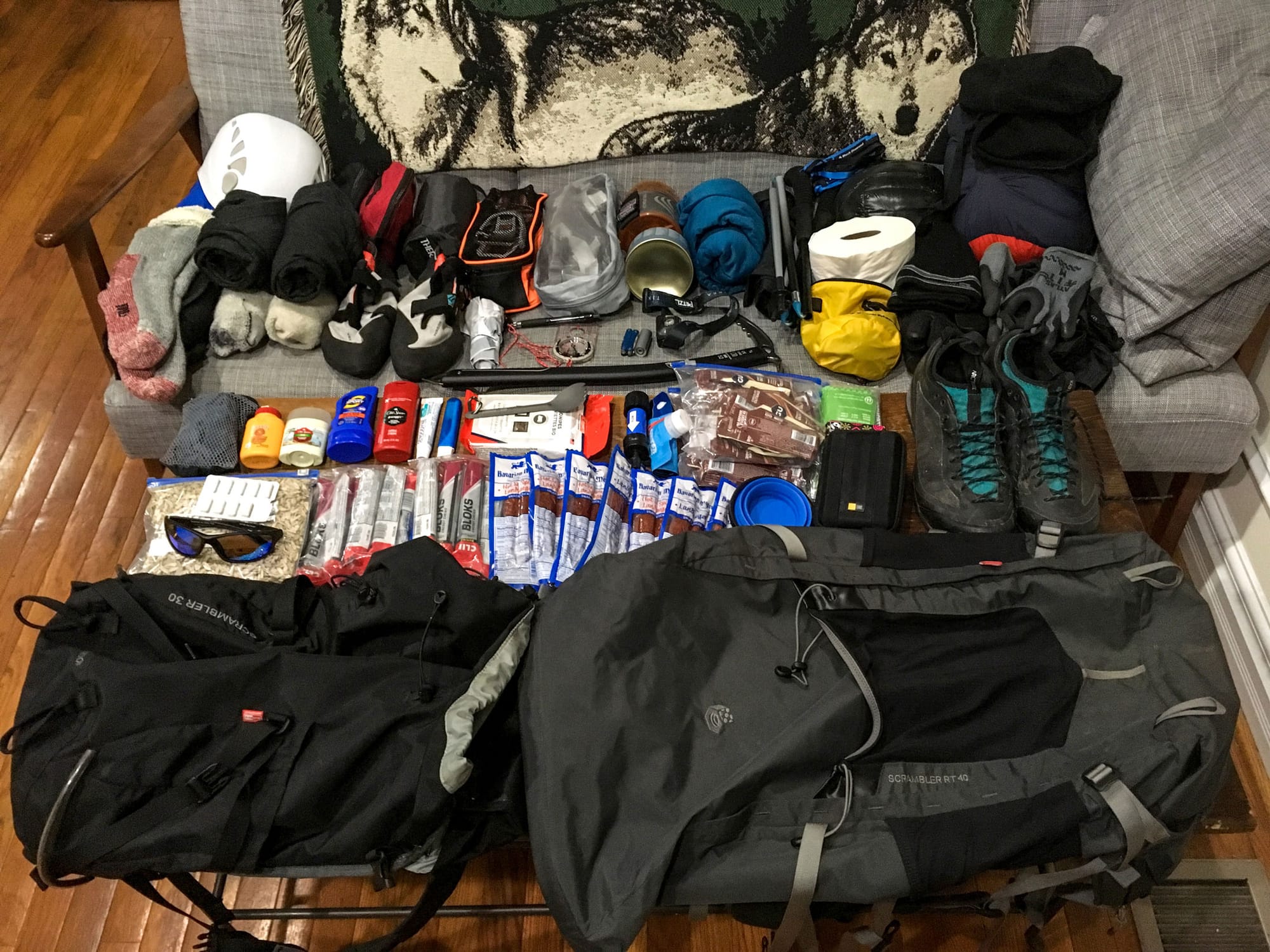
I discovered a 15oz sleeping bag.
To fit all my gear in the tiny 40L pack, I knew I needed to reduce the size of my two biggest items – my puffy and sleeping bag. My old ones were $40 North Face knockoffs purchased in Kathmandu. Although they worked great, they took up about 20 of the 40L.
My solution was to purchase a Mountain Hardwear Ghost Whisperer down jacket and Feathered Friends Vireo Ultralight.
The Vireo is a pretty unique bag. To keep the weight and size to an absolute minimum, it lacks a hood and zipper. The down fill is also different in the top and bottom halves – the lower half is rated at 25ºF / -4ºC, the upper half 45ºF / 7ºC). In colder temps, you simply wear your puffy and other layers to keep your top half warm.
After using it in the Cascades in winter conditions during AMTL1, I can report back that this bag was worth the money. However, if the temps are in the low 20s or teens, definitely be prepared to wear layers.
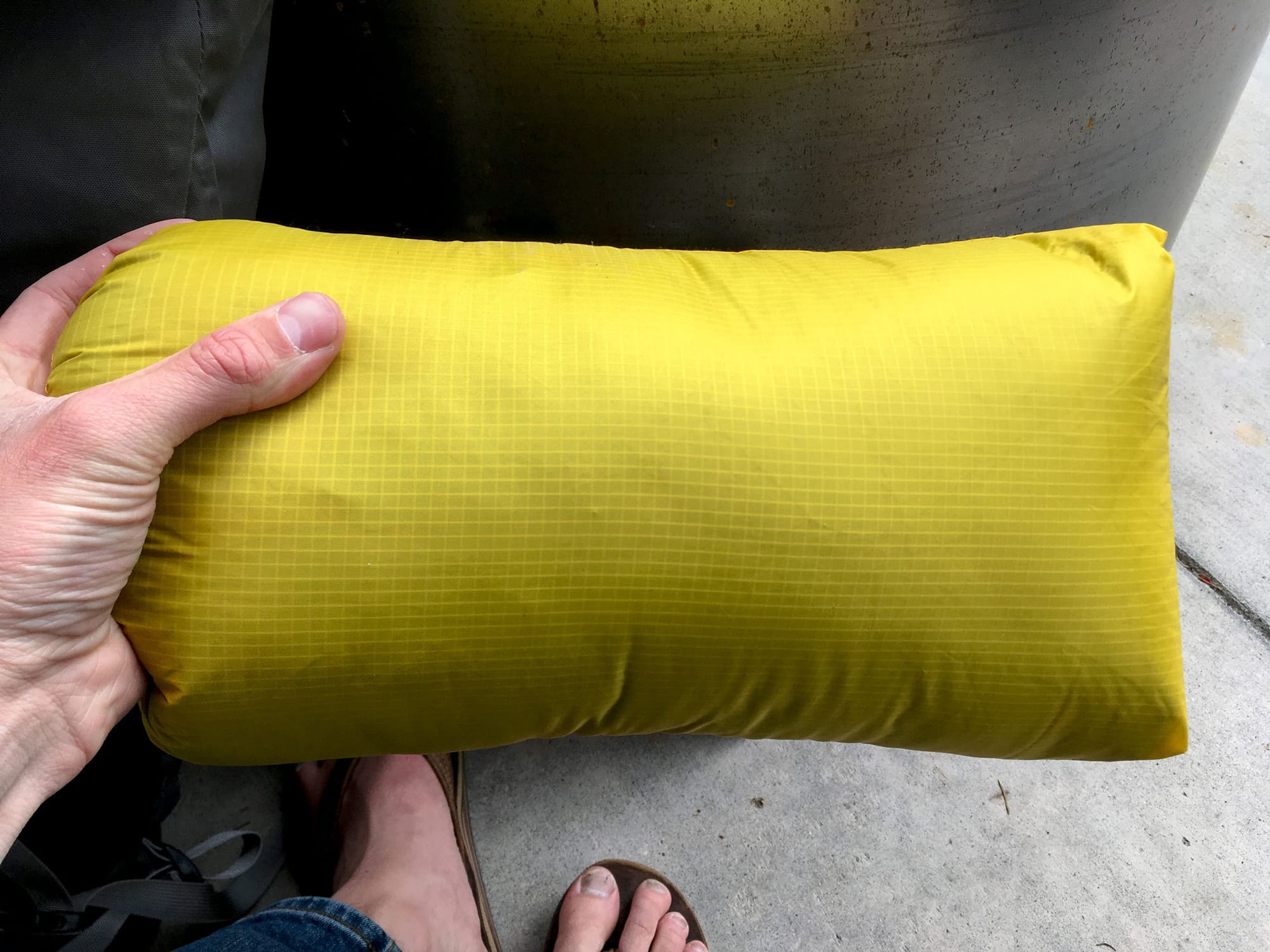
Day 1. Gear checkout and climbing basics
After arriving at the Alpine Institute, the first order of business was to check out everyone’s gear and make purchases of items we lacked. I ended up buying a pair of glacier glasses, an extra pair of medium-weight gloves, and snow buckets for my trekking poles.
Rather than drop a lot of money on expensive mountaineering boots and a tent, I opted to rent.
In hindsight, I wish I had purchased boots, rather than renting. The plastic rentals were horrible – old, super heavy, and not a perfect fit. Even with thick wool socks, my shins ended up pretty bruised and cut up after just a few hours.
As an aside, well-made gaiters are a must, regardless of the boot. My cheapo Kathmandu gaiters broke after a couple of days and my plastic boots soon filled with snow. Trudging around in soggy socks in cold temperatures is neither fun nor all that safe. I kept the socks and boot insoles in my sleeping bag at night to dry them out as best I could.
Whereas the boots were probably my worst piece of gear – aside from the broken gaiters – the rental tent was one of the best. The inside of our double-walled red Hilleberg Nallo 2 stayed quite dry, despite days of rain and snow.
Days 2-4. Mt Baker.
After the intro day, we headed to Mount Baker and worked on a variety of snow and ice skills. An approaching storm prevented us from summiting and caused us to break camp a little early.
- Tuesday: Hiked up Baker and camped
- Wednesday: Practiced ice axe use, self-arrest, and crevasse rescue
- Thursday: Practiced glissading and hiked out just prior to a thunderstorm
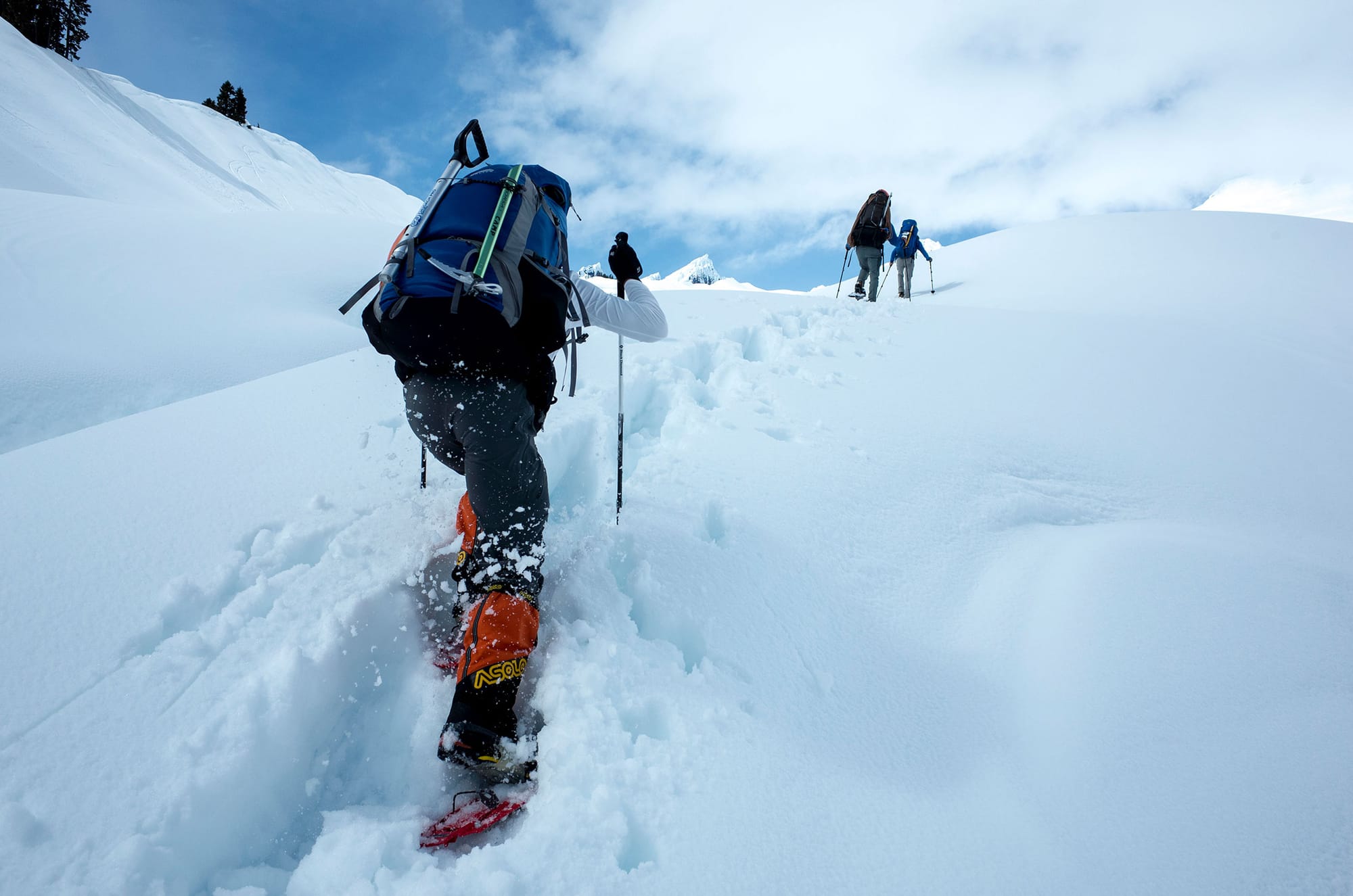
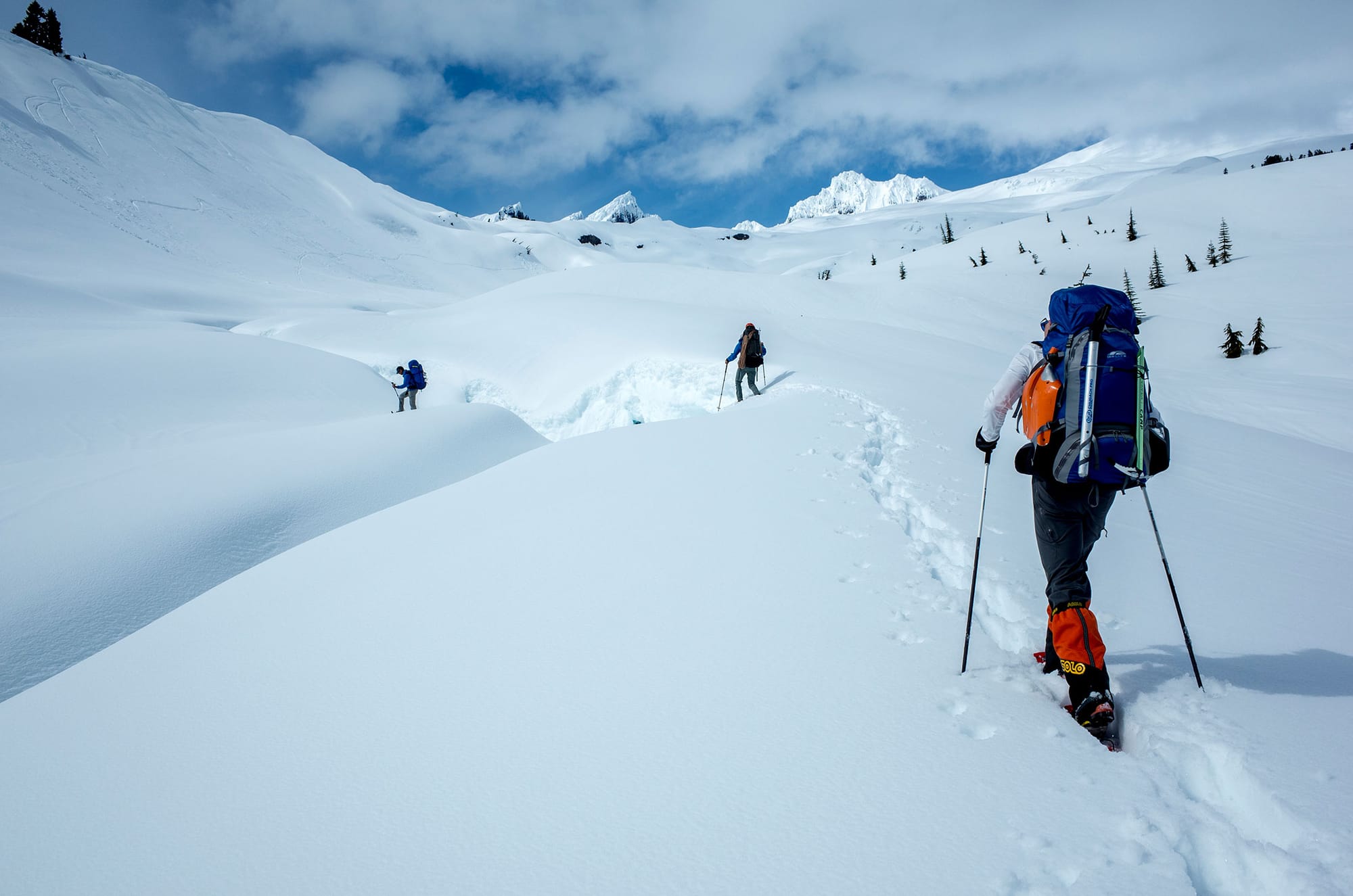
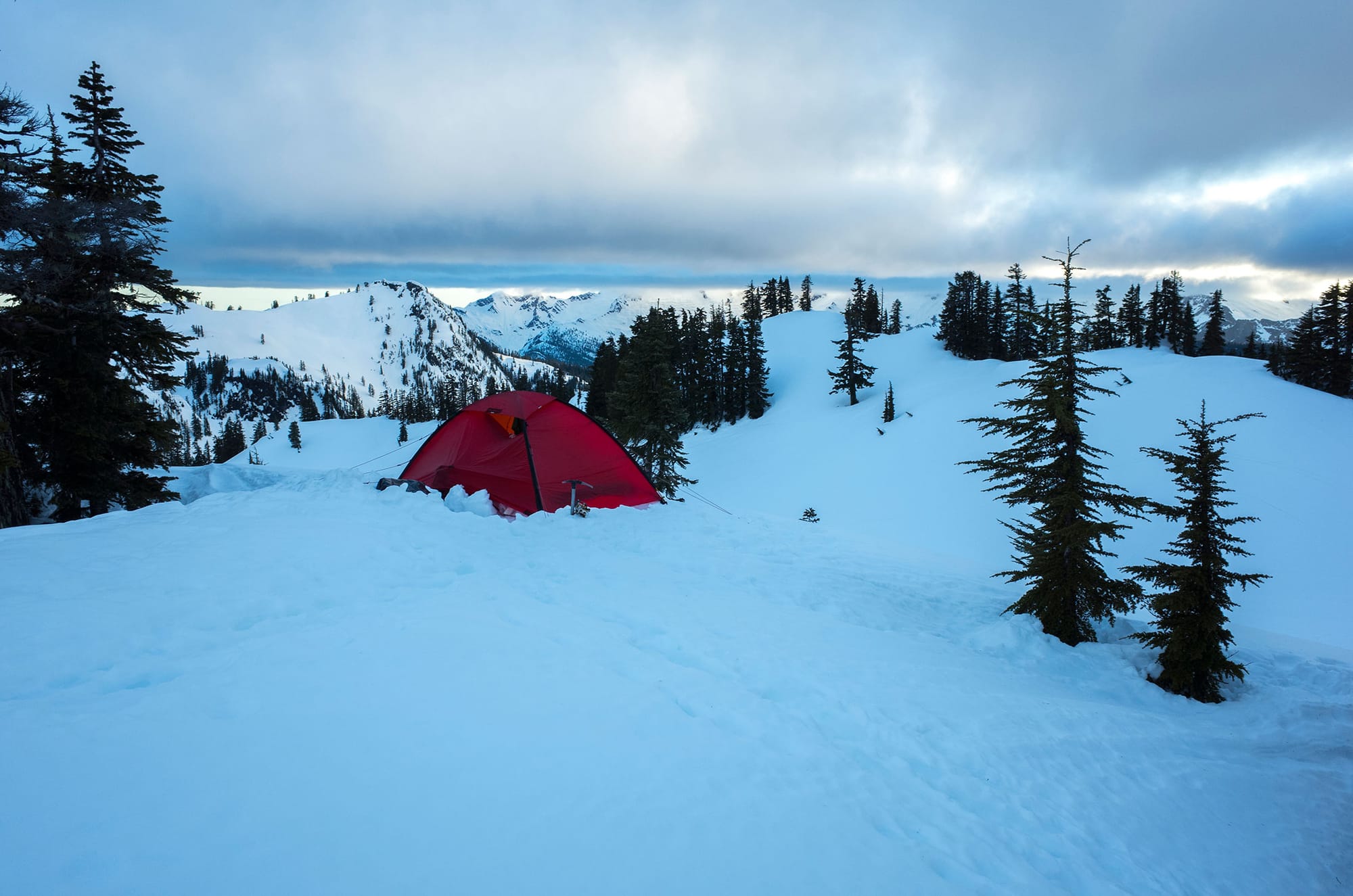
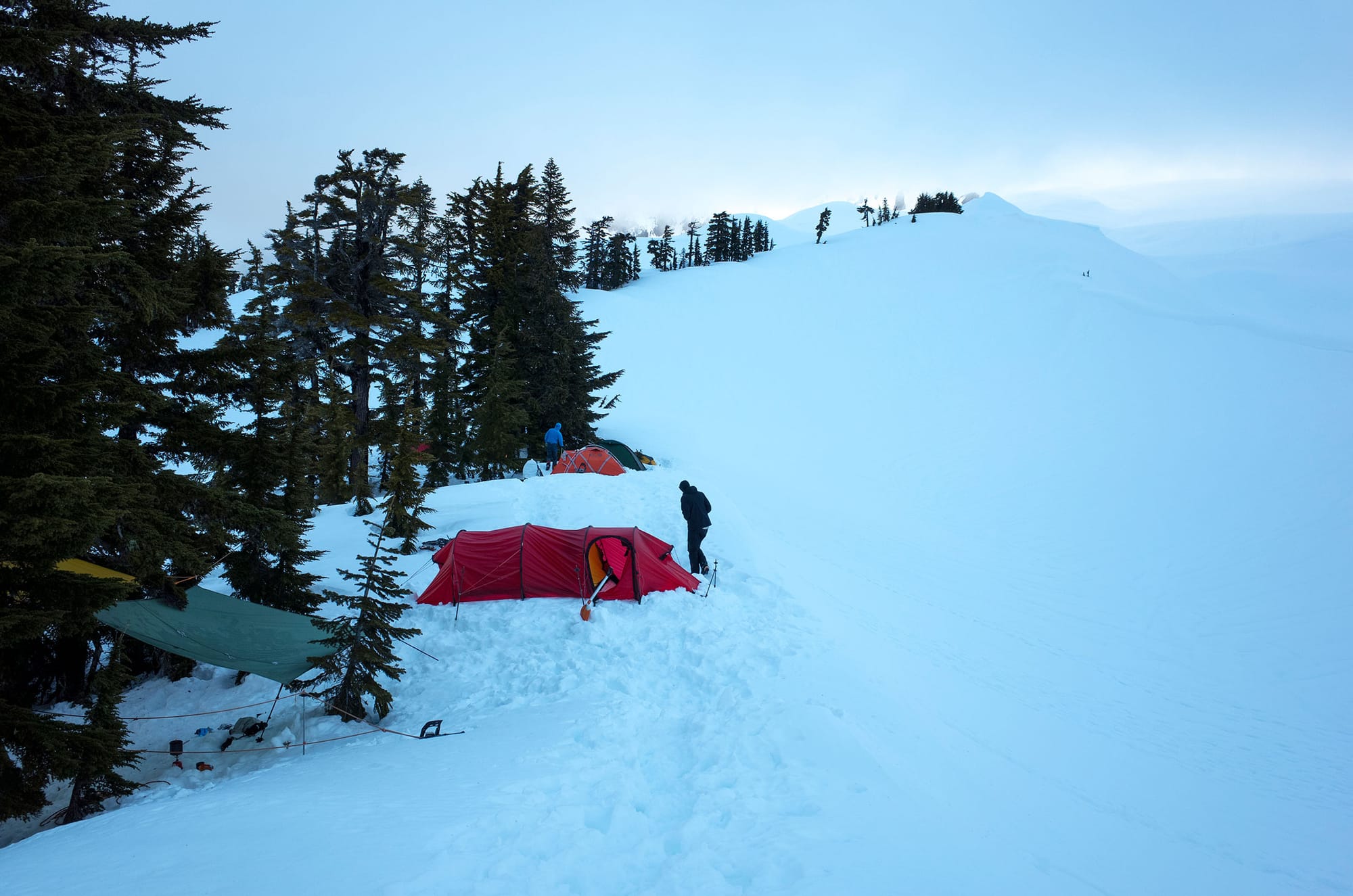
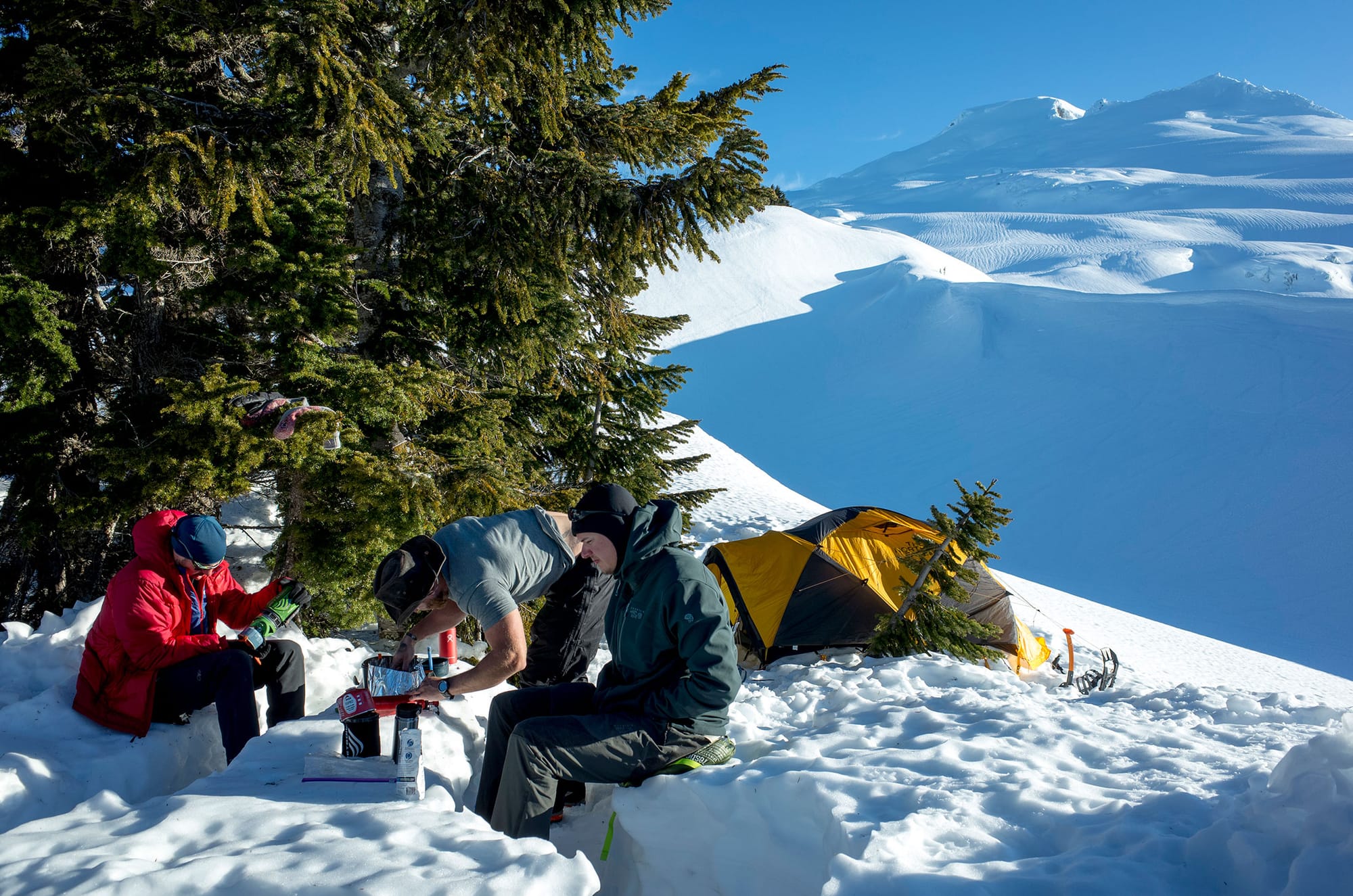
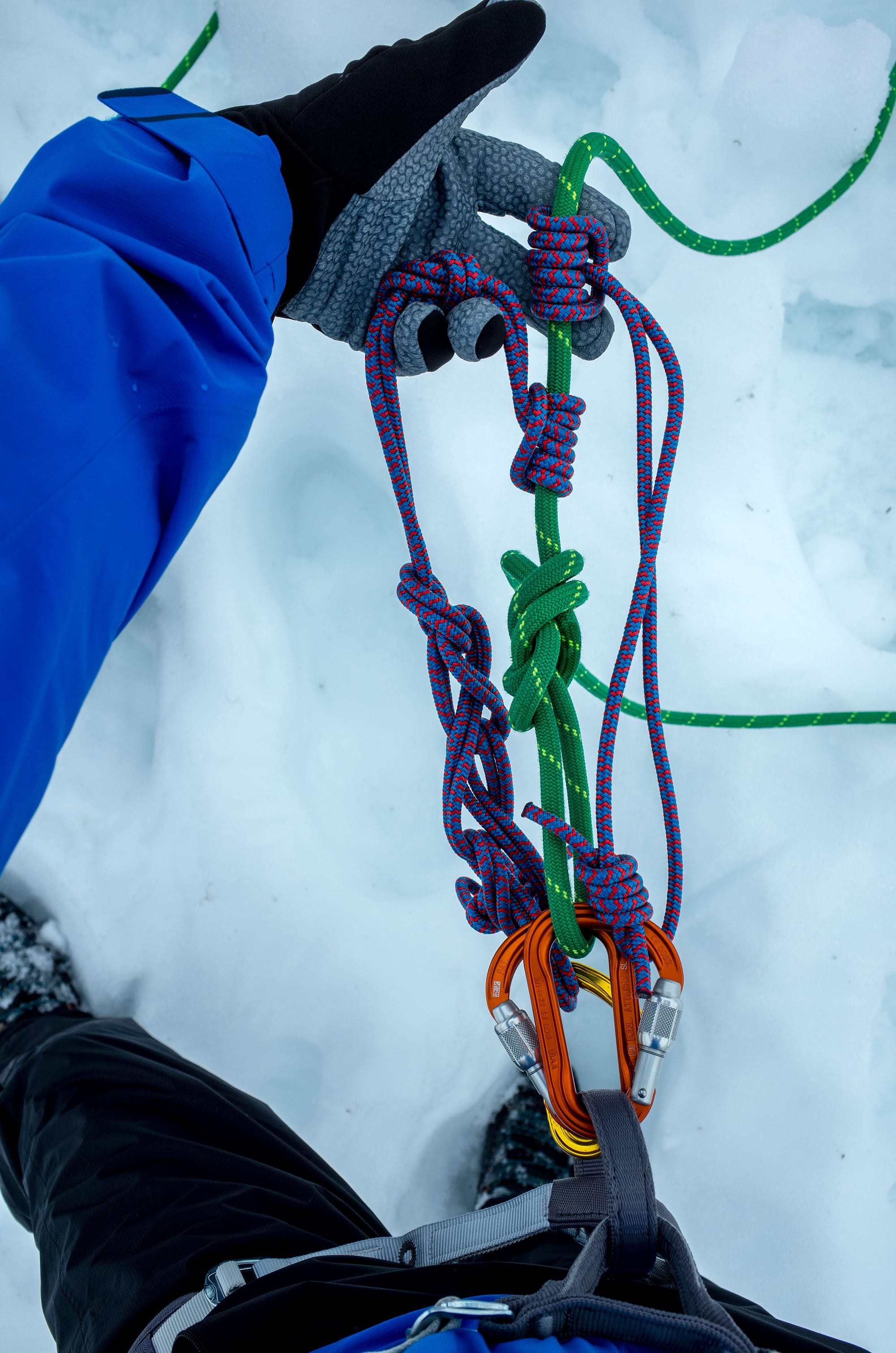
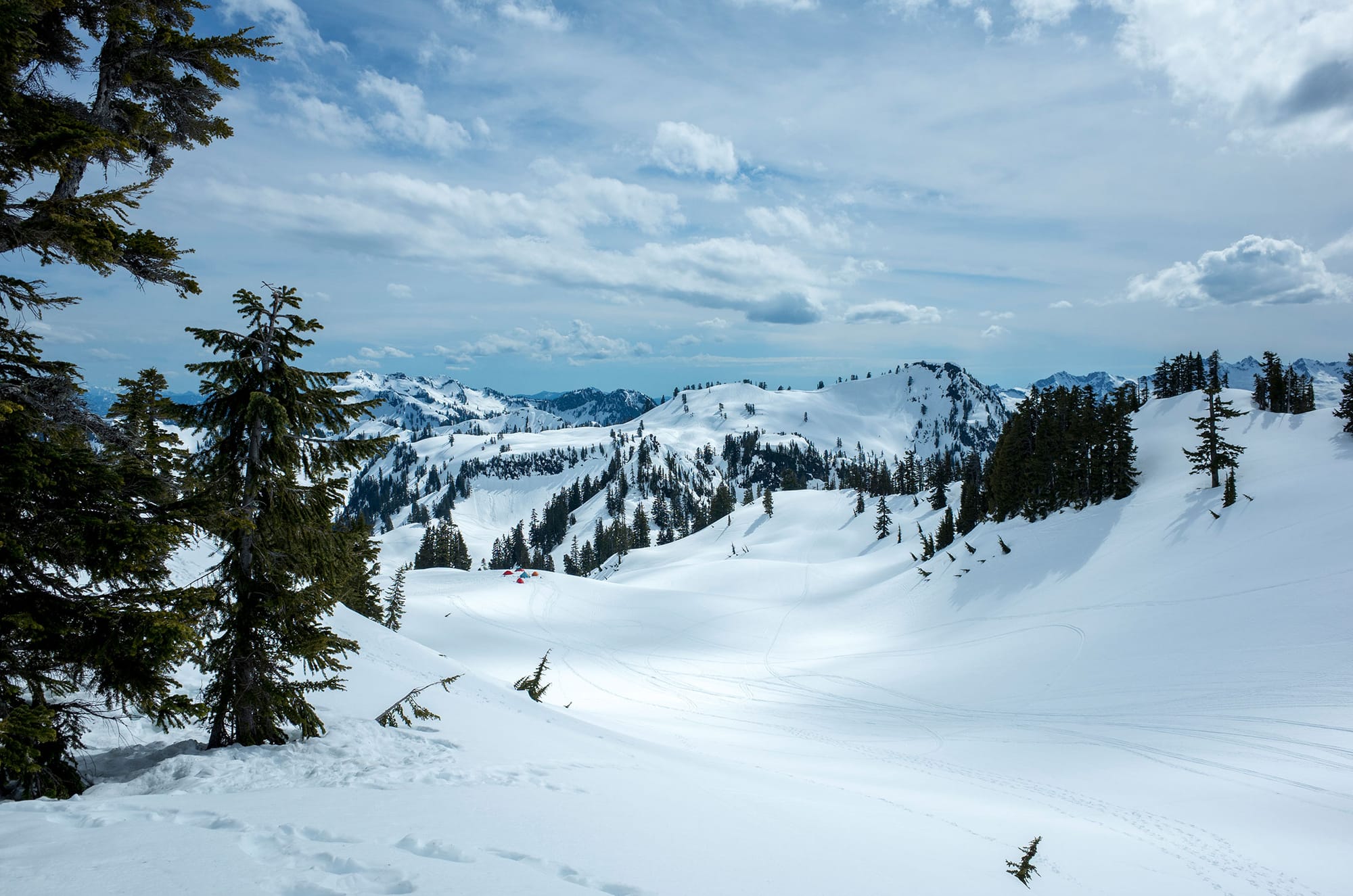
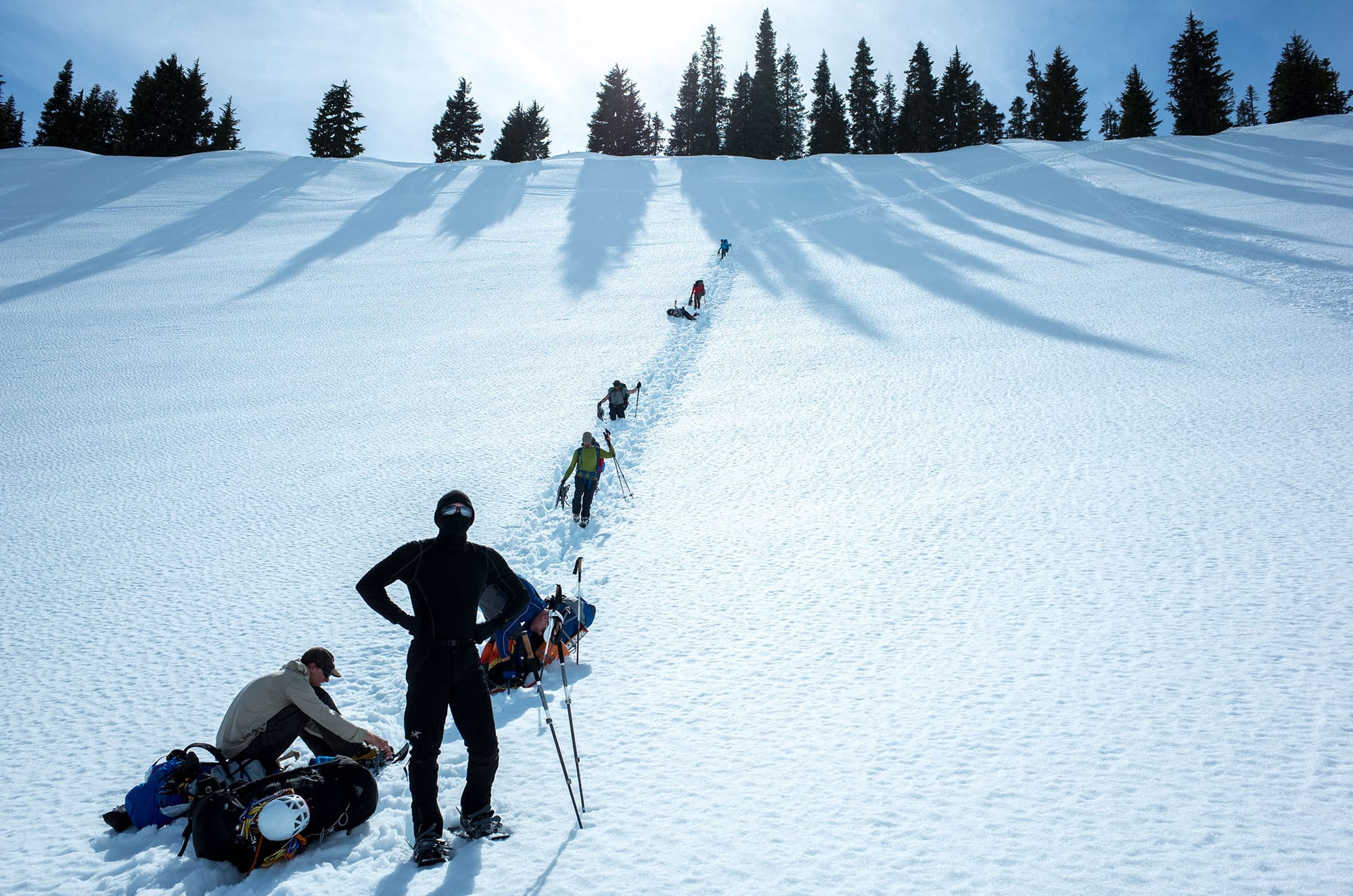
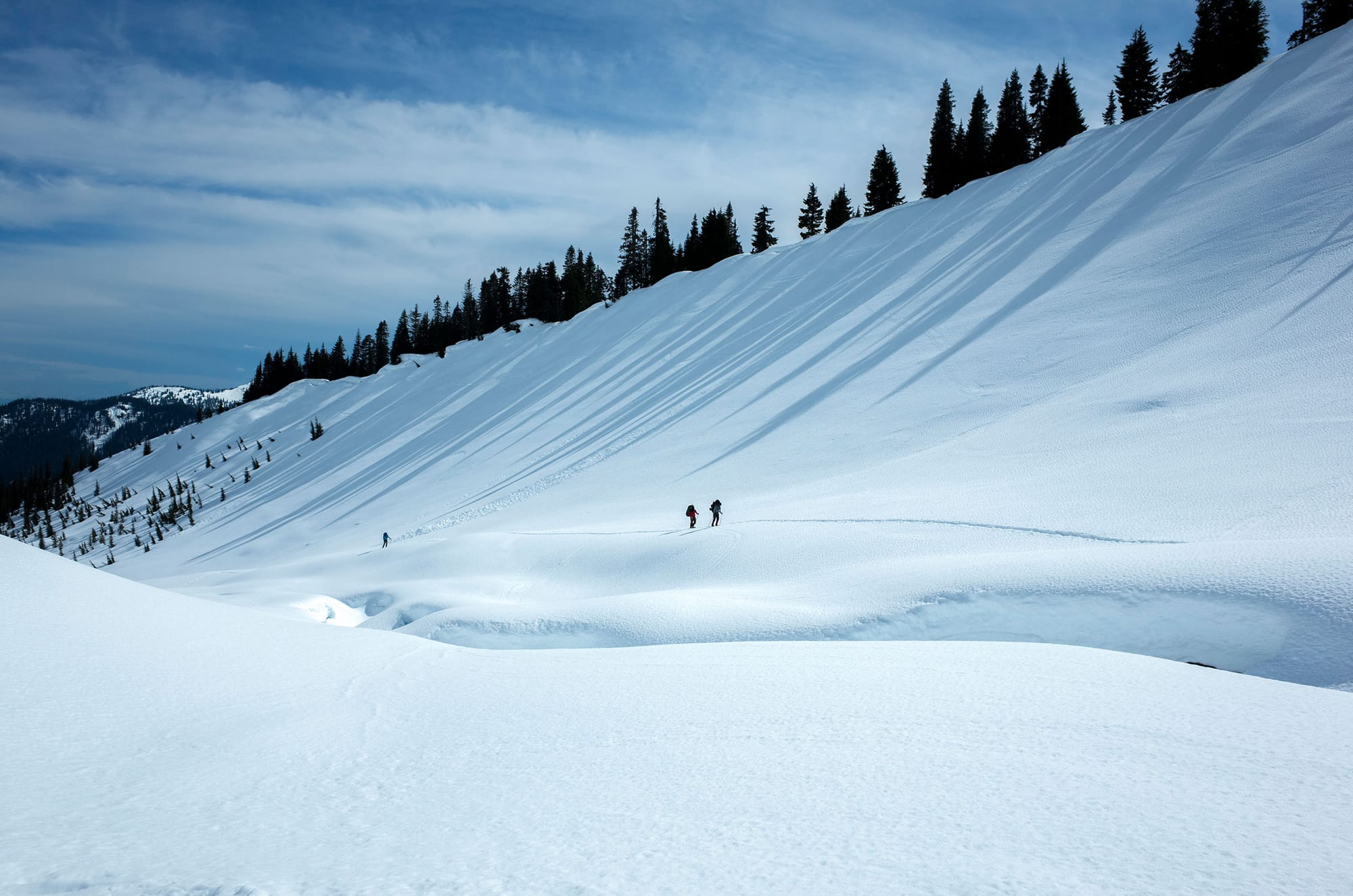
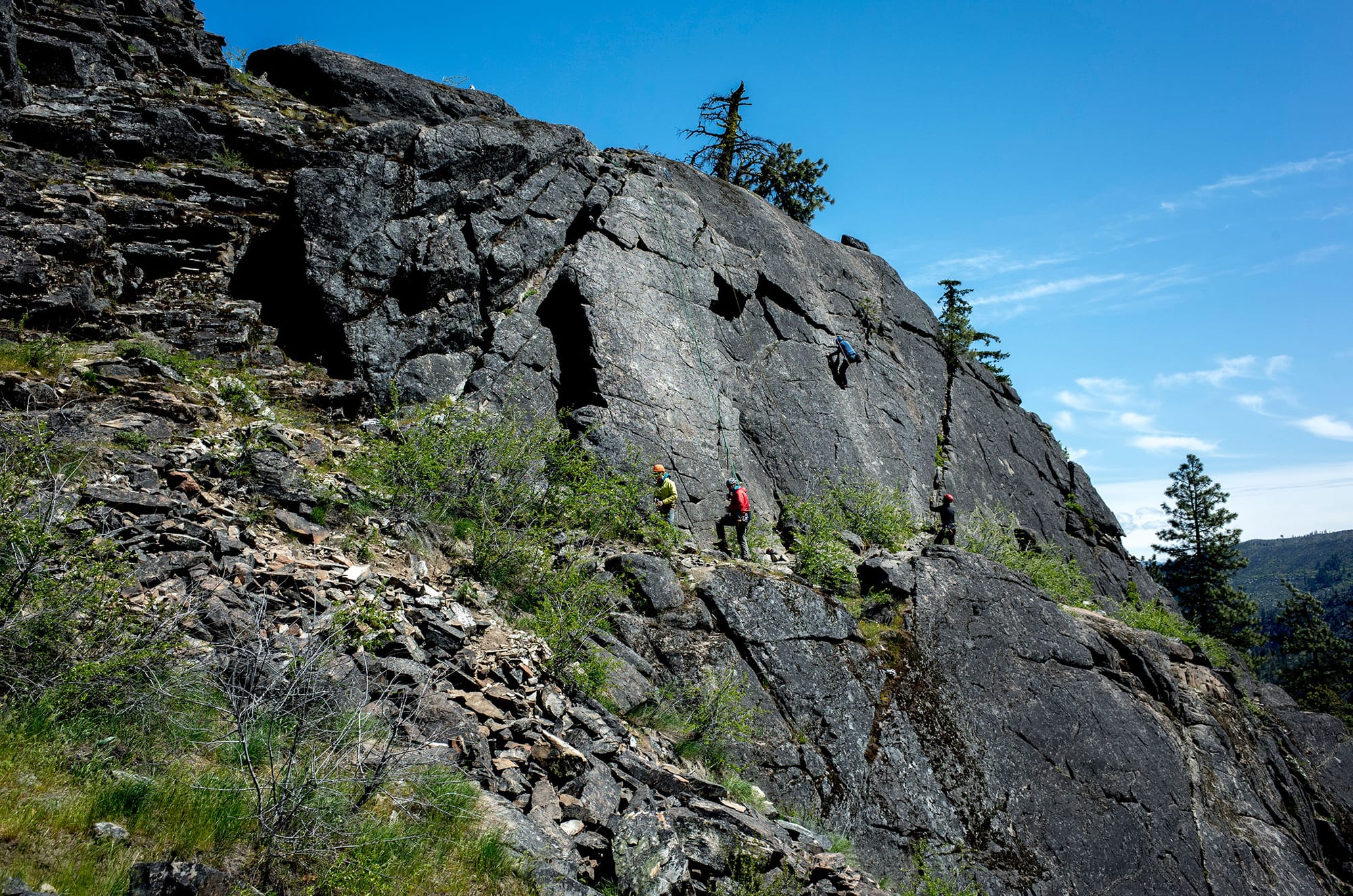
Days 5 – 9. On the rocks around Leavenworth.
Following Baker, our group made its way west across the Cascades to Leavenworth for the rock portion of the course. We started out with basic climbing techniques then covered how to clean for a leader and rappel. Along the way, we also picked up a variety of tips – e.g. how to rappel with two ropes, pass a knot, etc.
The route rating numbers below come from the Yosemite Decimal system.
- Friday: Barney's Rubble – climbed a 5.6 and 5.7
- Saturday: Playground Point – climbed 2 routes of 5.7
- Sunday: Mountaineers Buttress – (trad cleaning practice) cleaned 3 routes of 5.4-5.6
- Monday: R&D on Icicle Buttress – (multi-pitch + cleaning practice) cleaned 5 pitches of 5.6, belayed the leader, and rappelled
Tuesday: Ground Hog Day on February Buttress – (multi-pitch + cleaning practice) cleaned 3 pitches of 5.6, belayed the leader, and rappelled
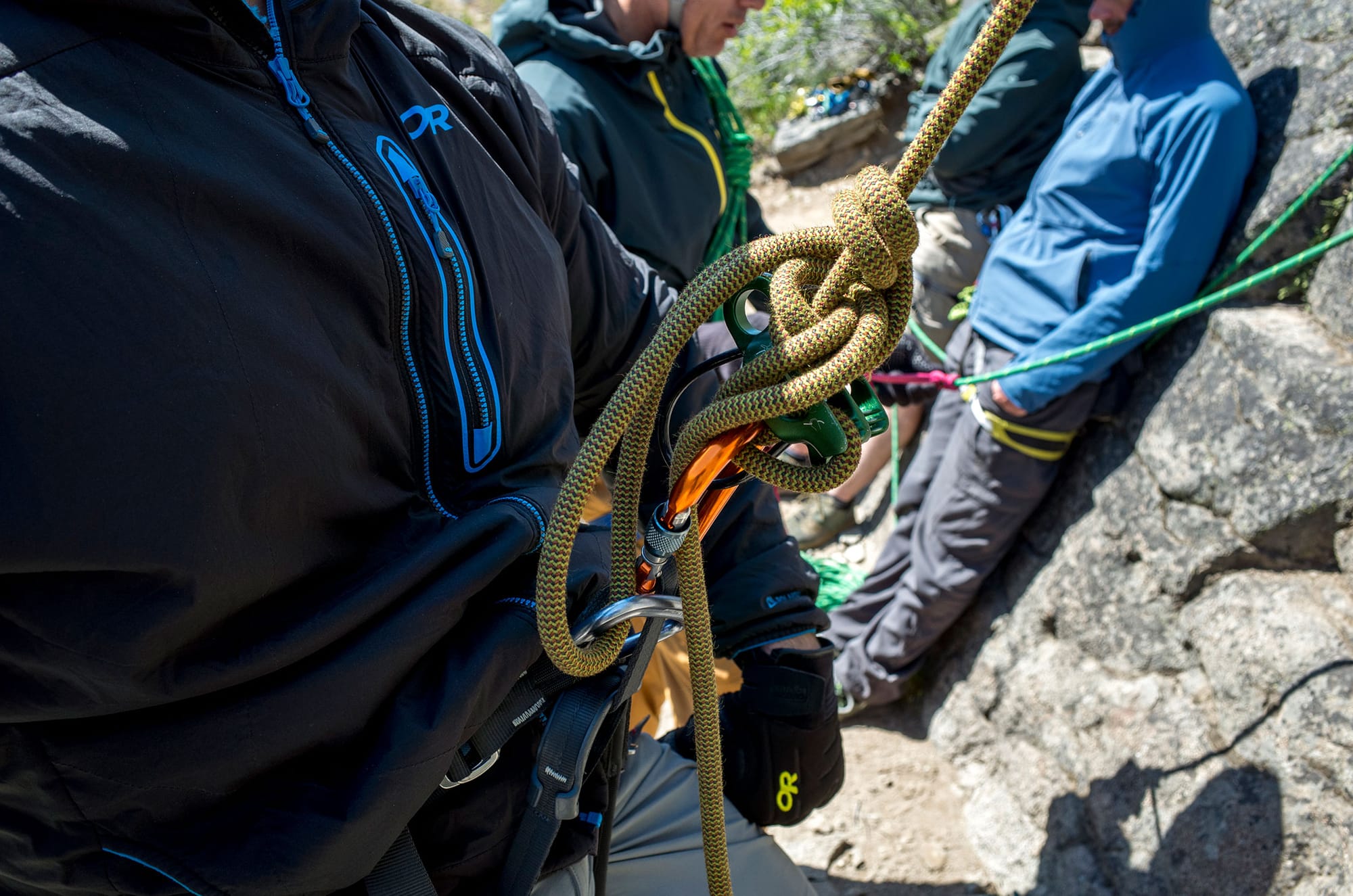
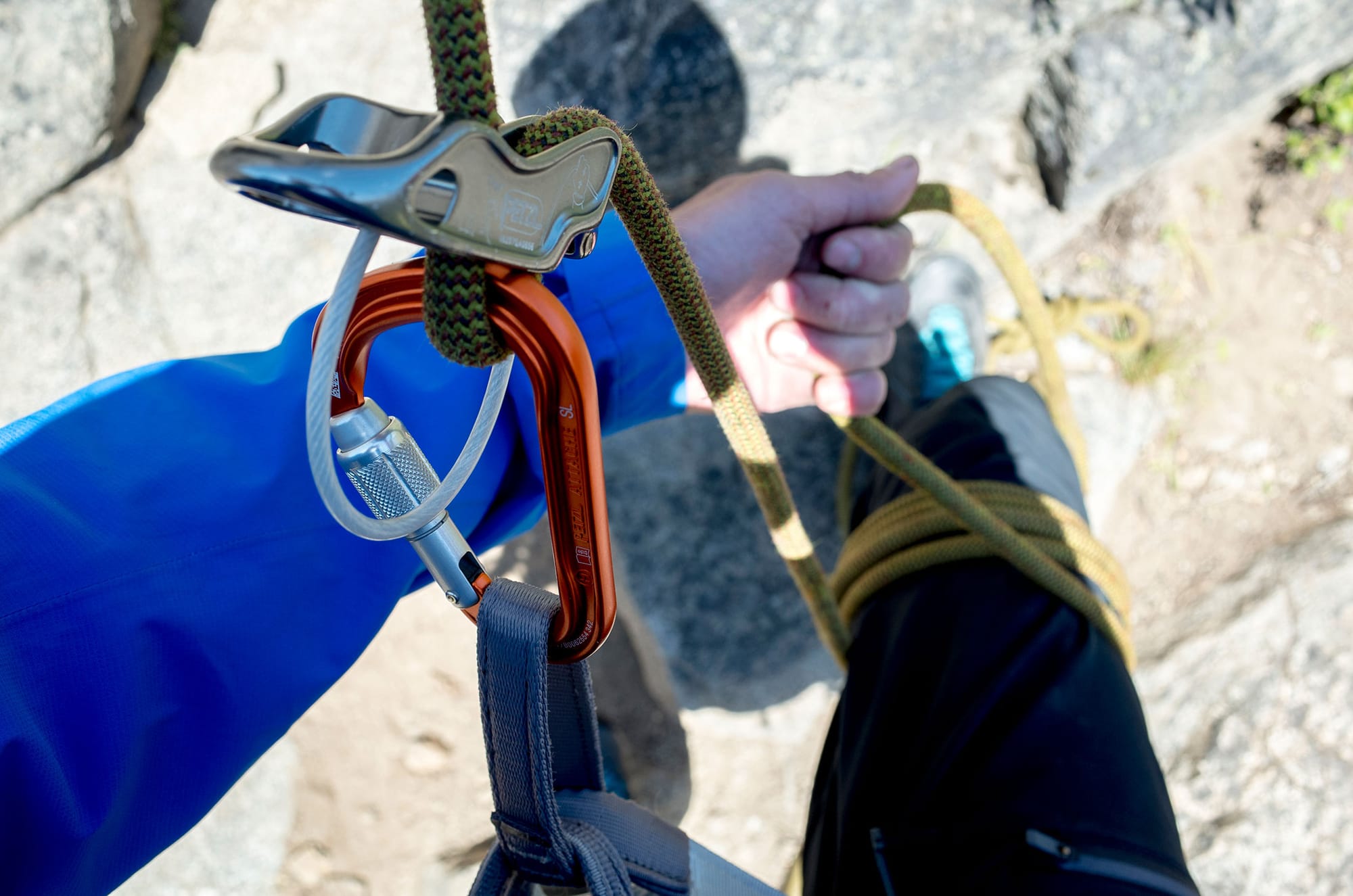
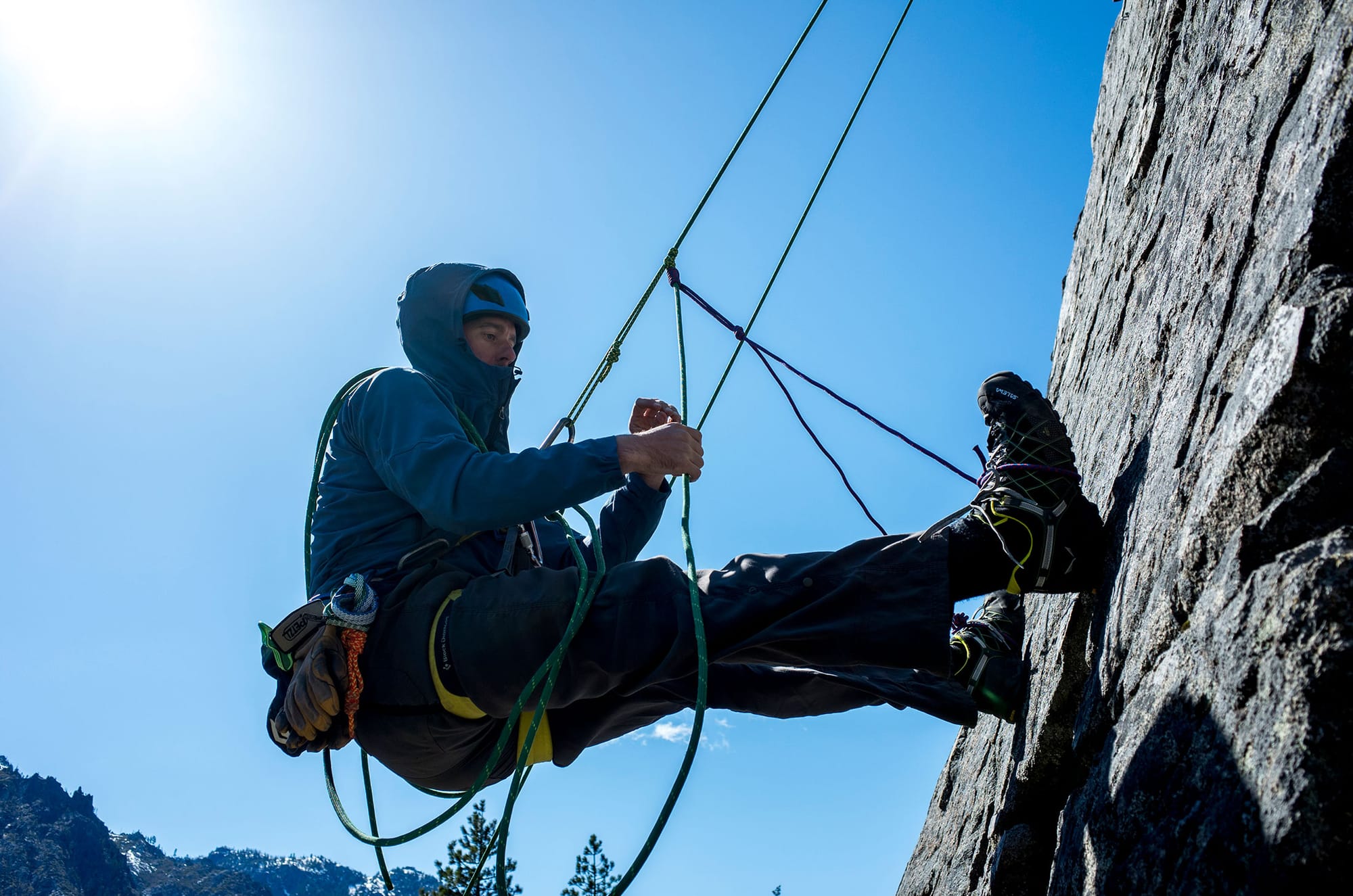
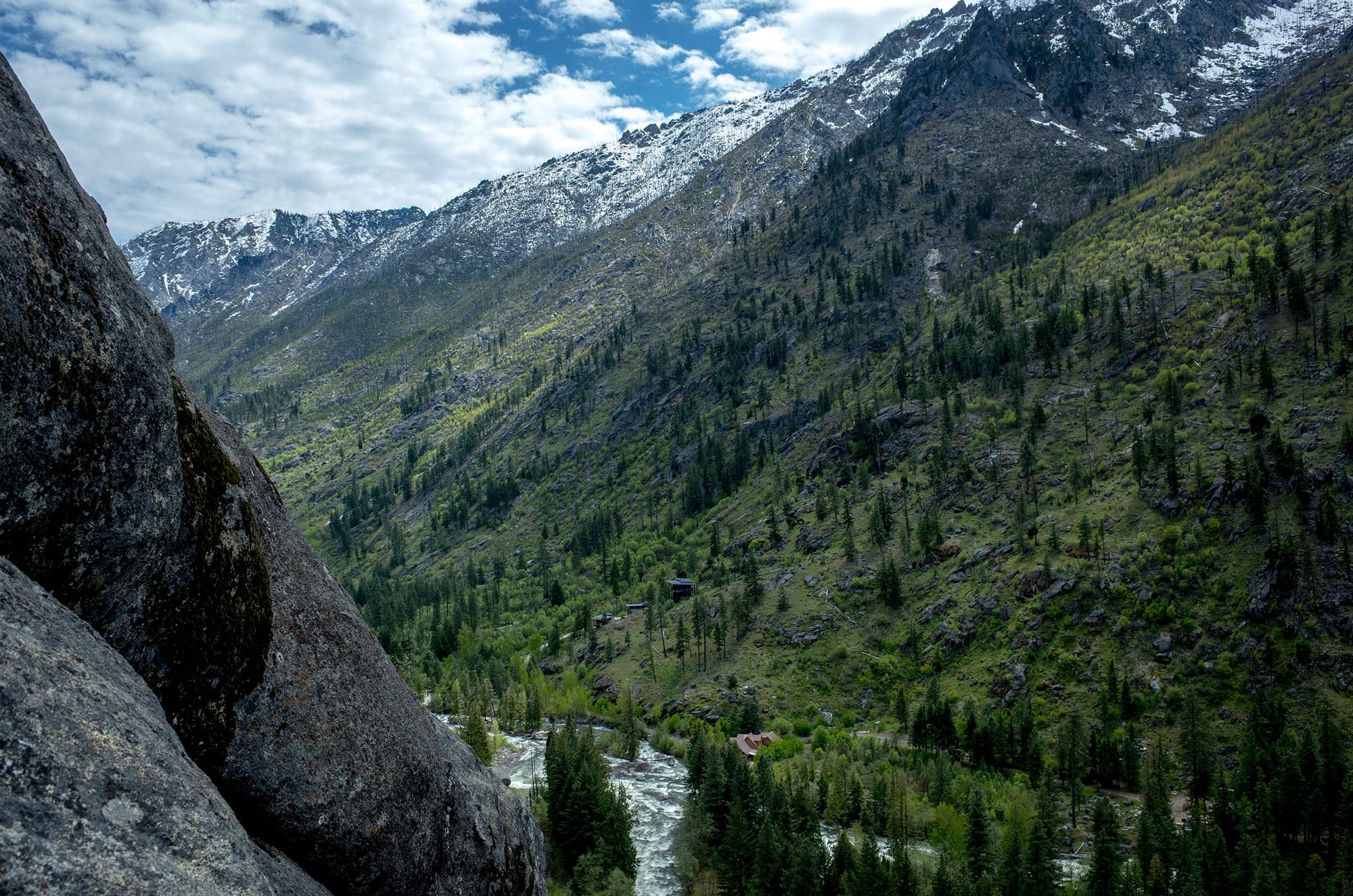
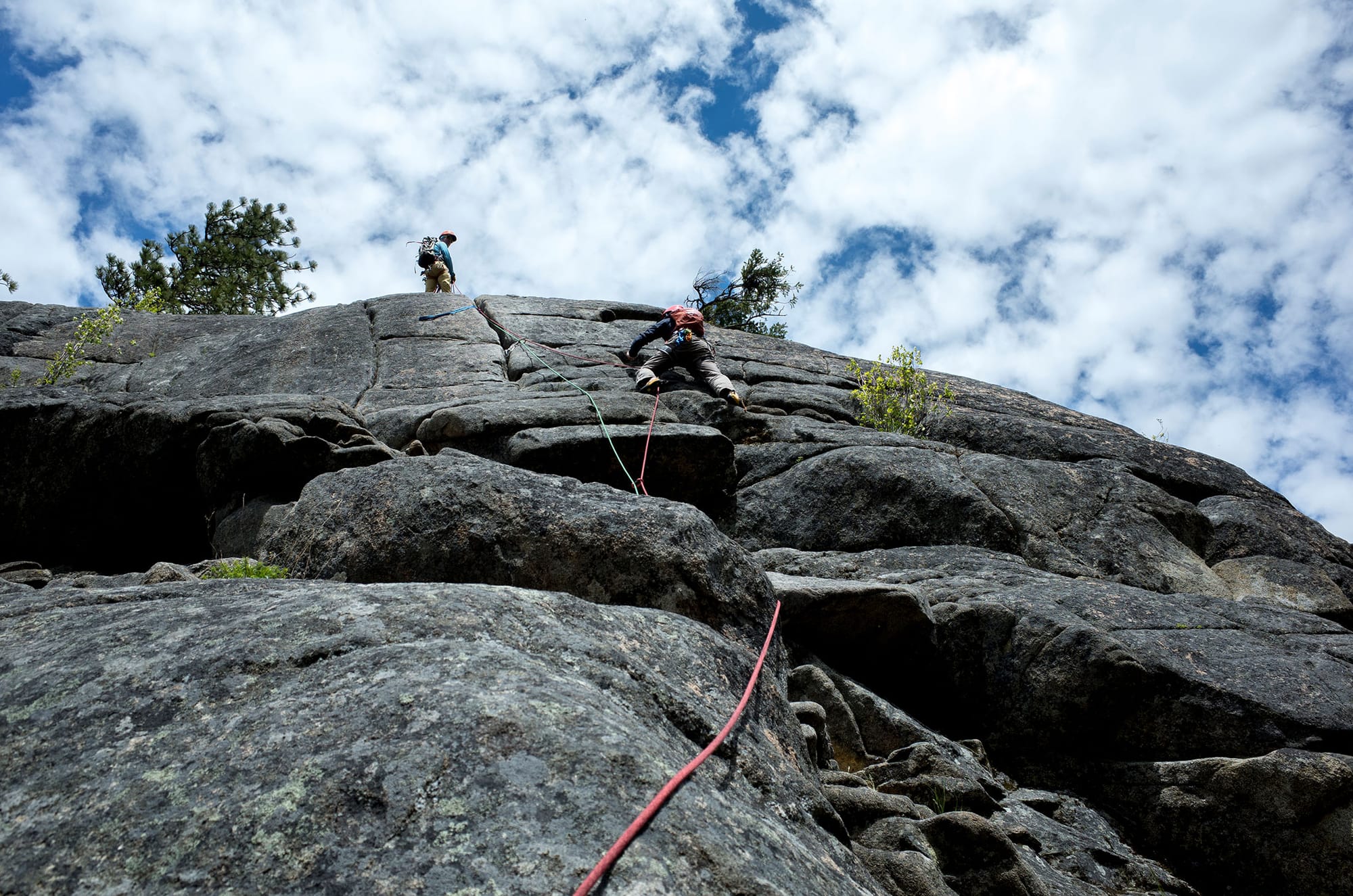

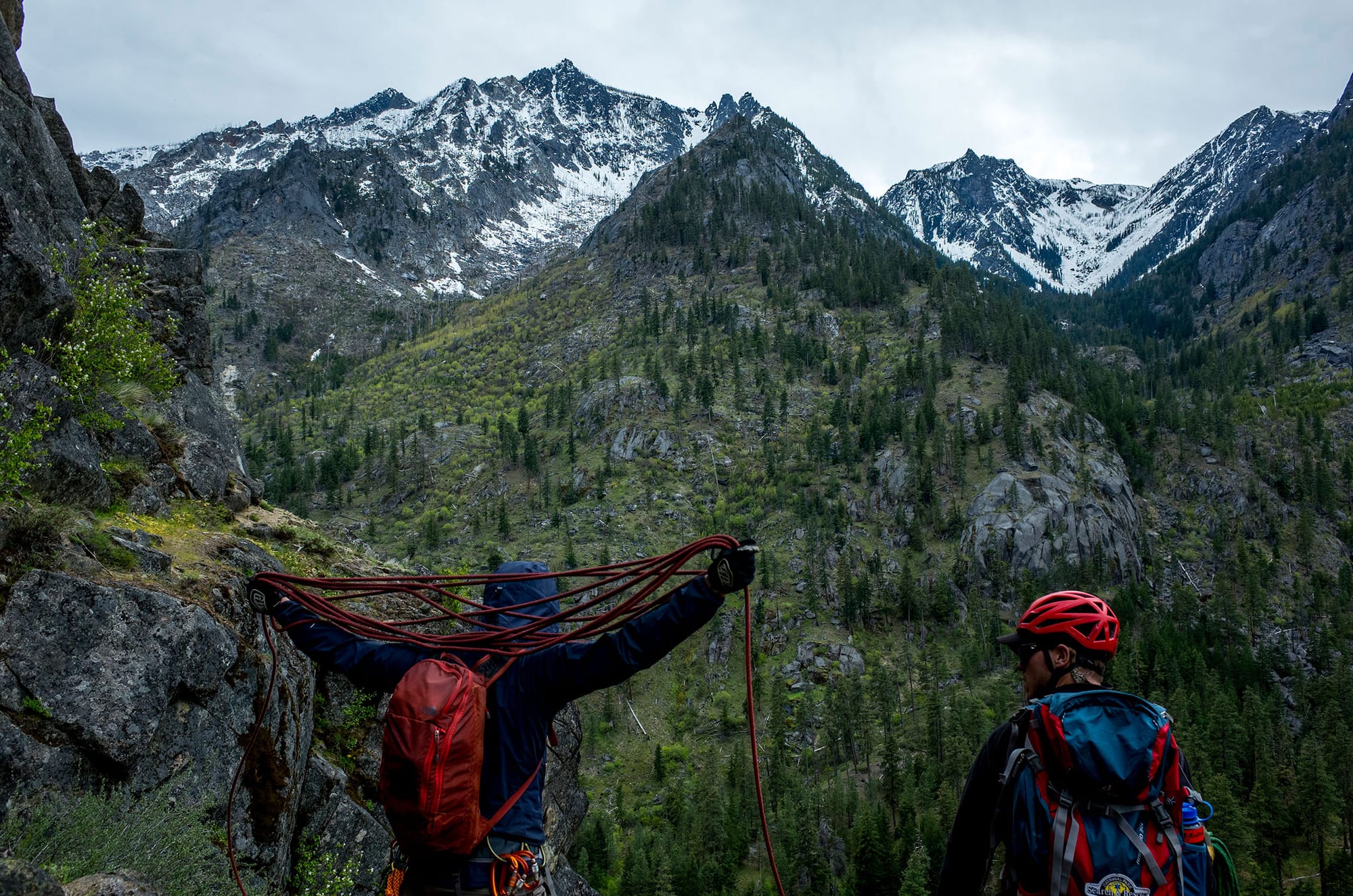
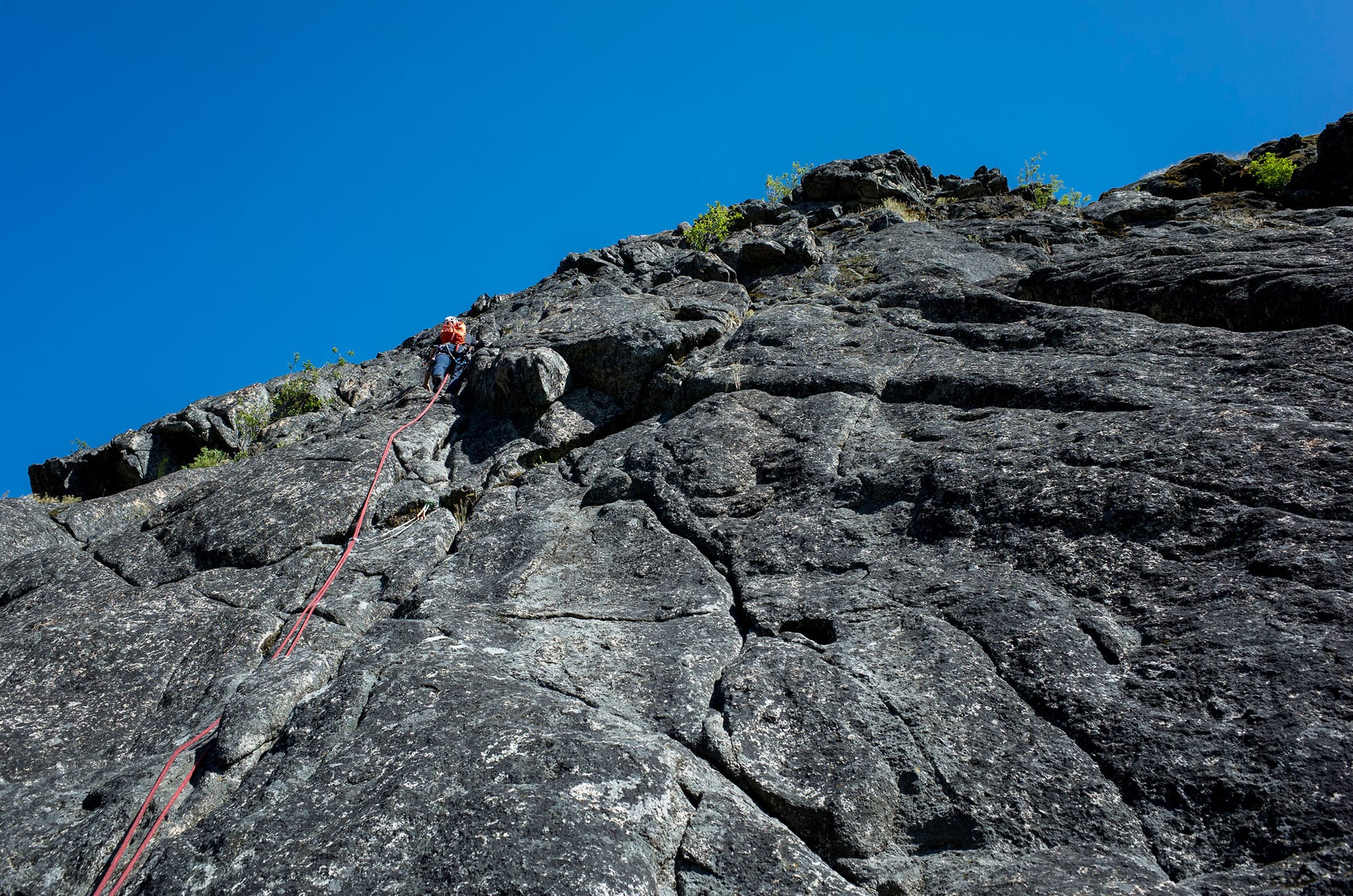
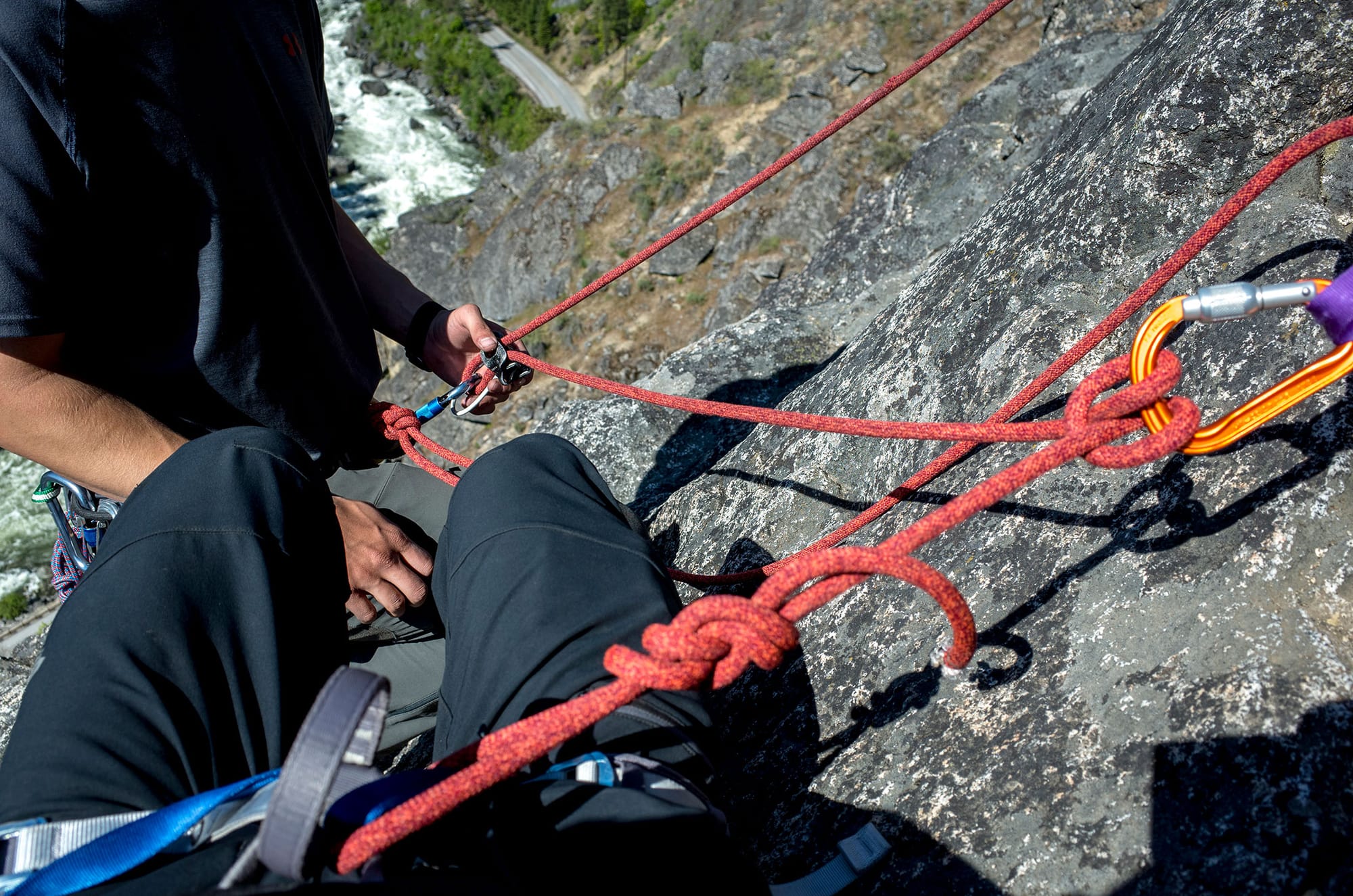
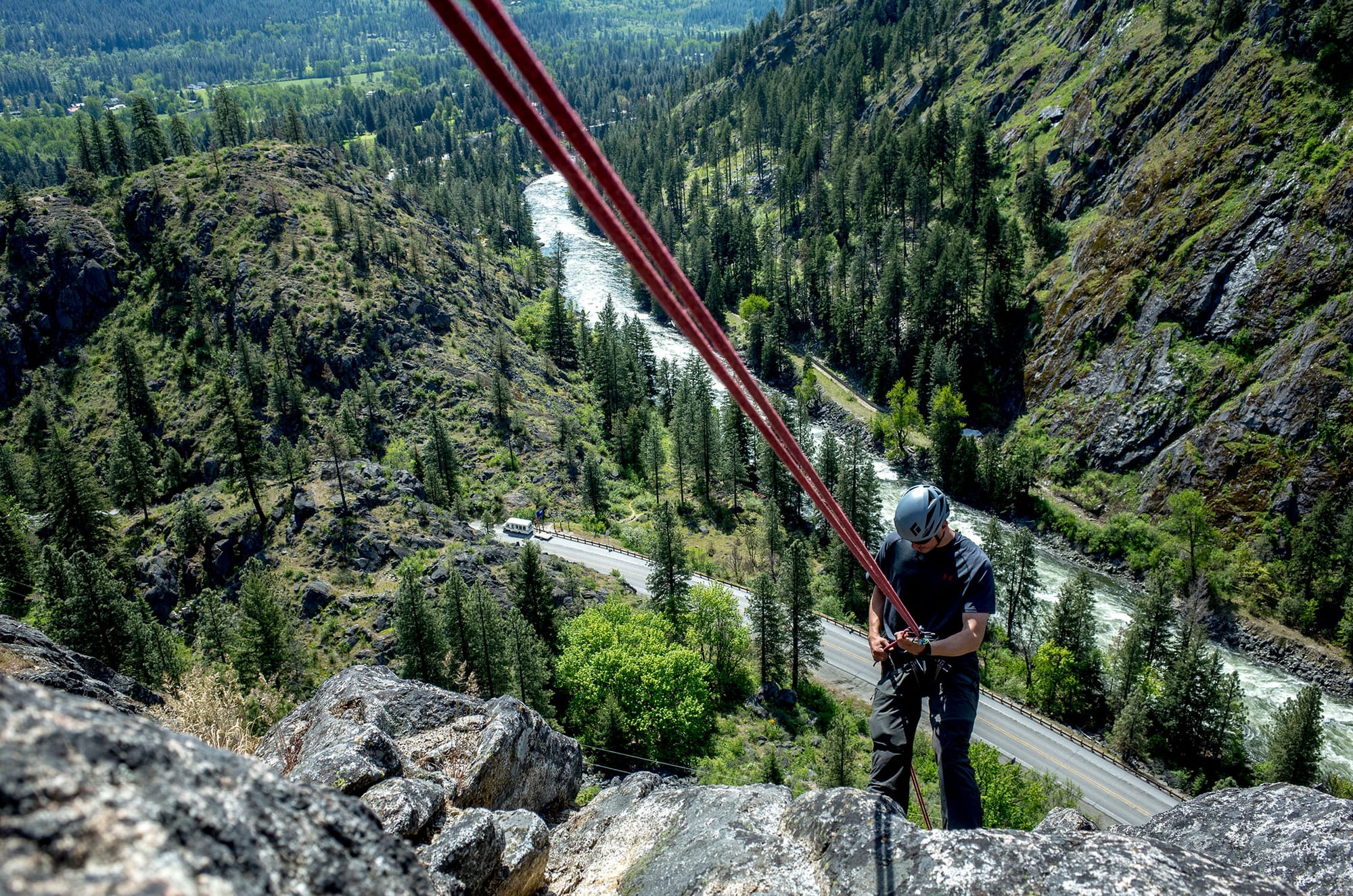
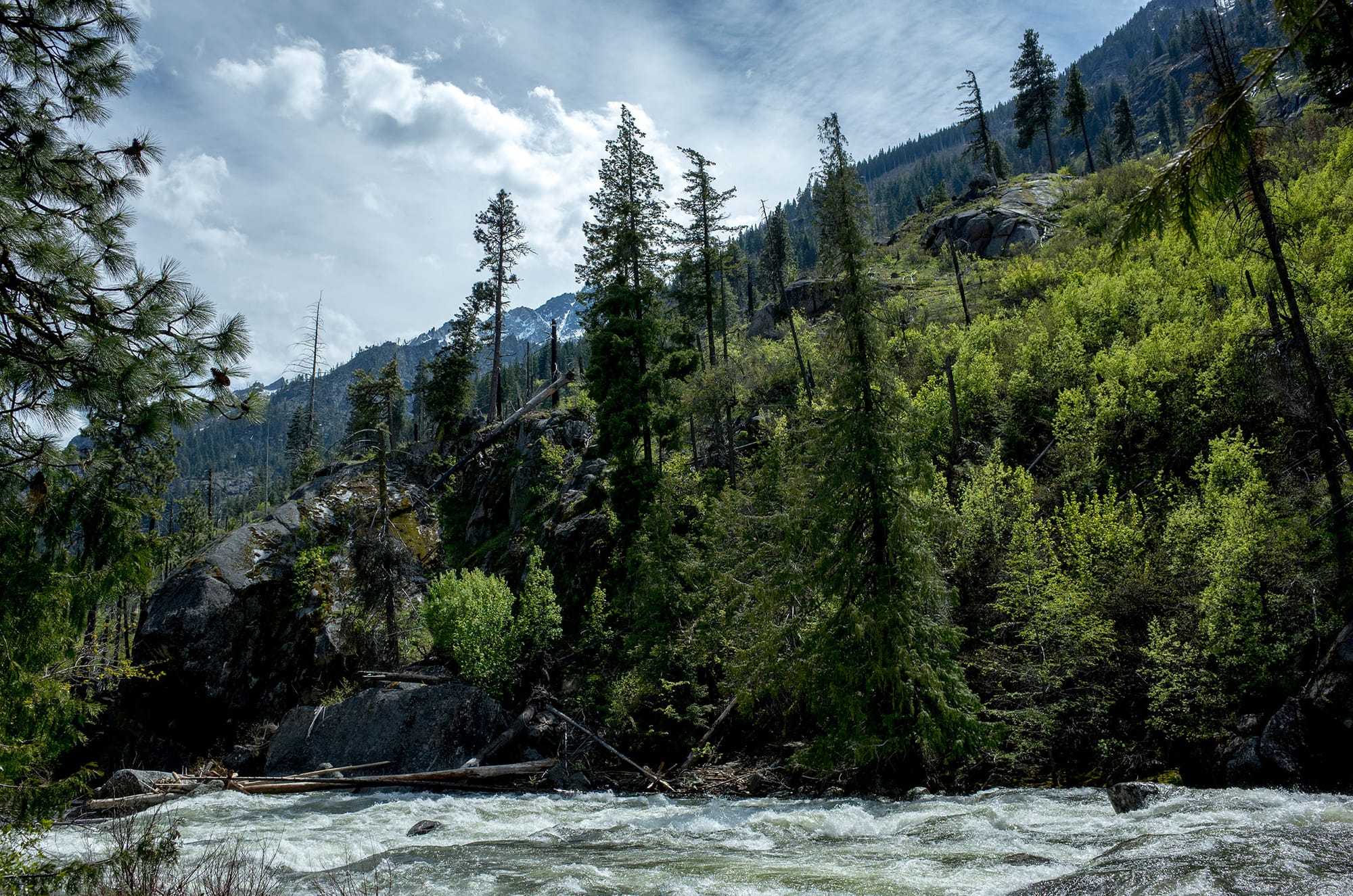
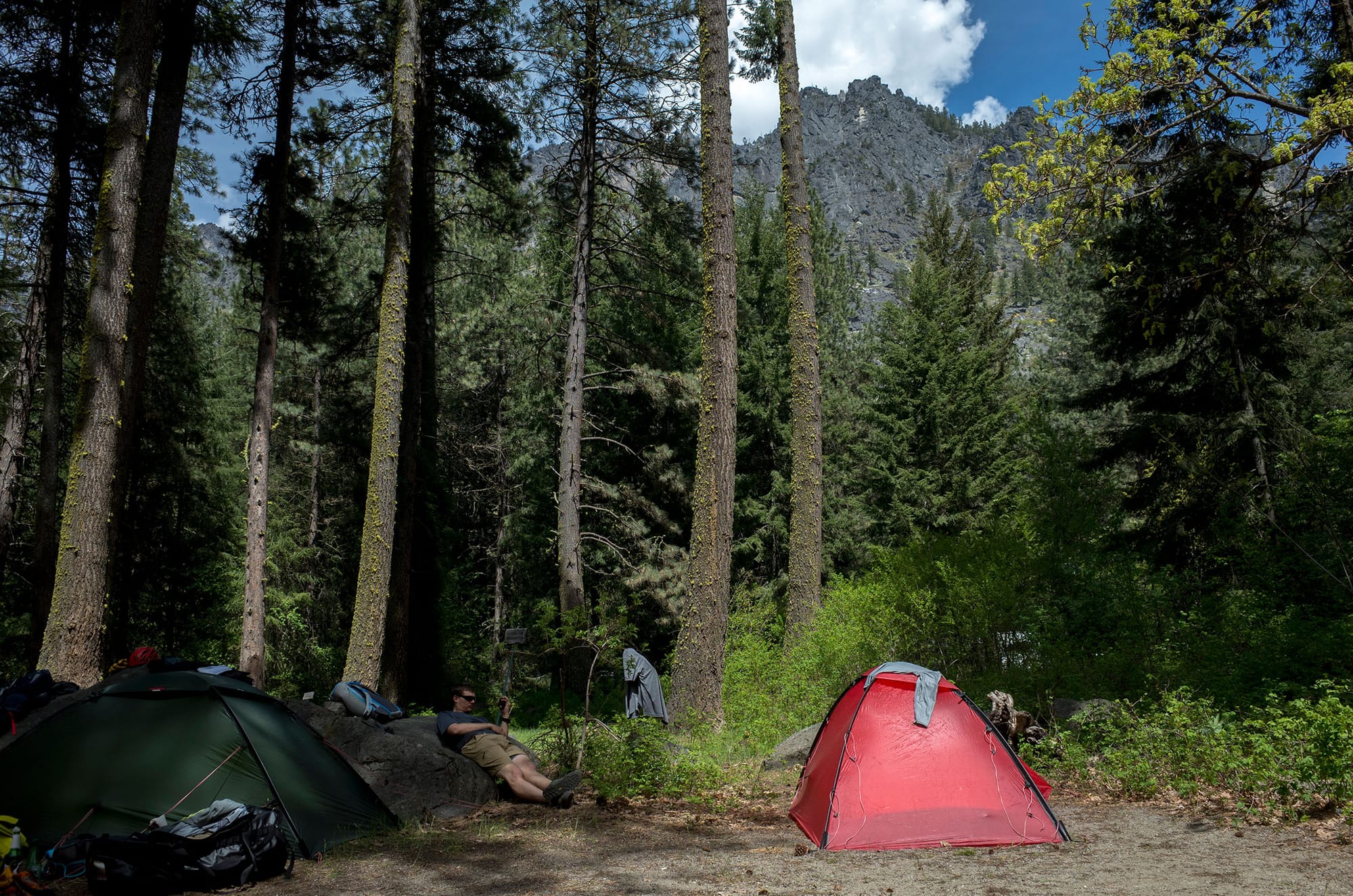
Days 10 – 12. Sahale Mountain in the Pickets.
The end of the course was intended to be a technical ascent of a peak in the Cascades that required glacial travel and some form of rock scrambling or climbing.
Due to weather and time constraints, our group selected Sahale Peak.
- Wednesday: Hiked through the back country and camped next to Sahale
- Thursday: Waited for the weather to clear (aka sat in the tent for 24hrs)
- Friday: Attempted to summit Sahale but turned back when faced with a whiteout in avalanche territory
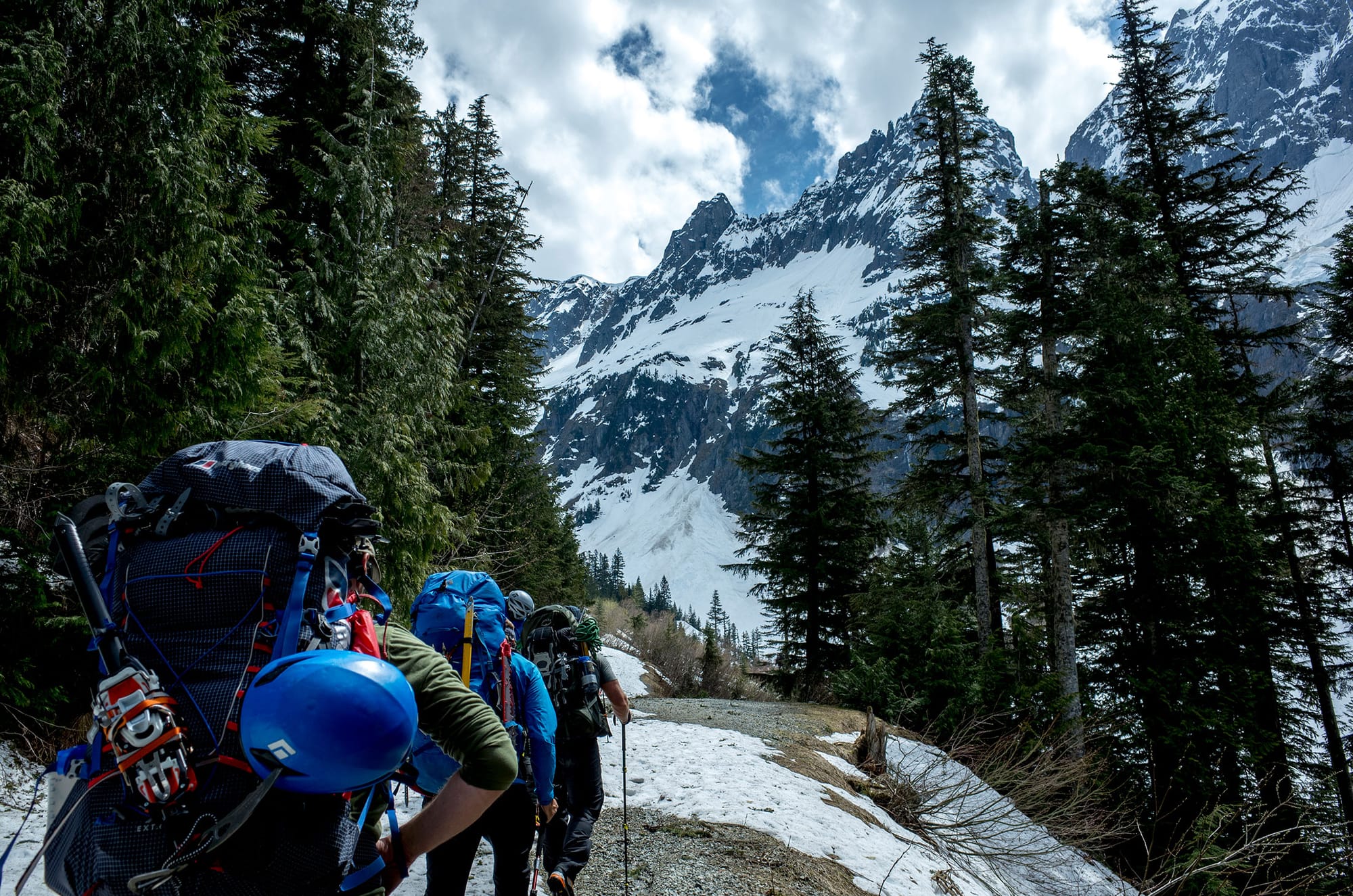
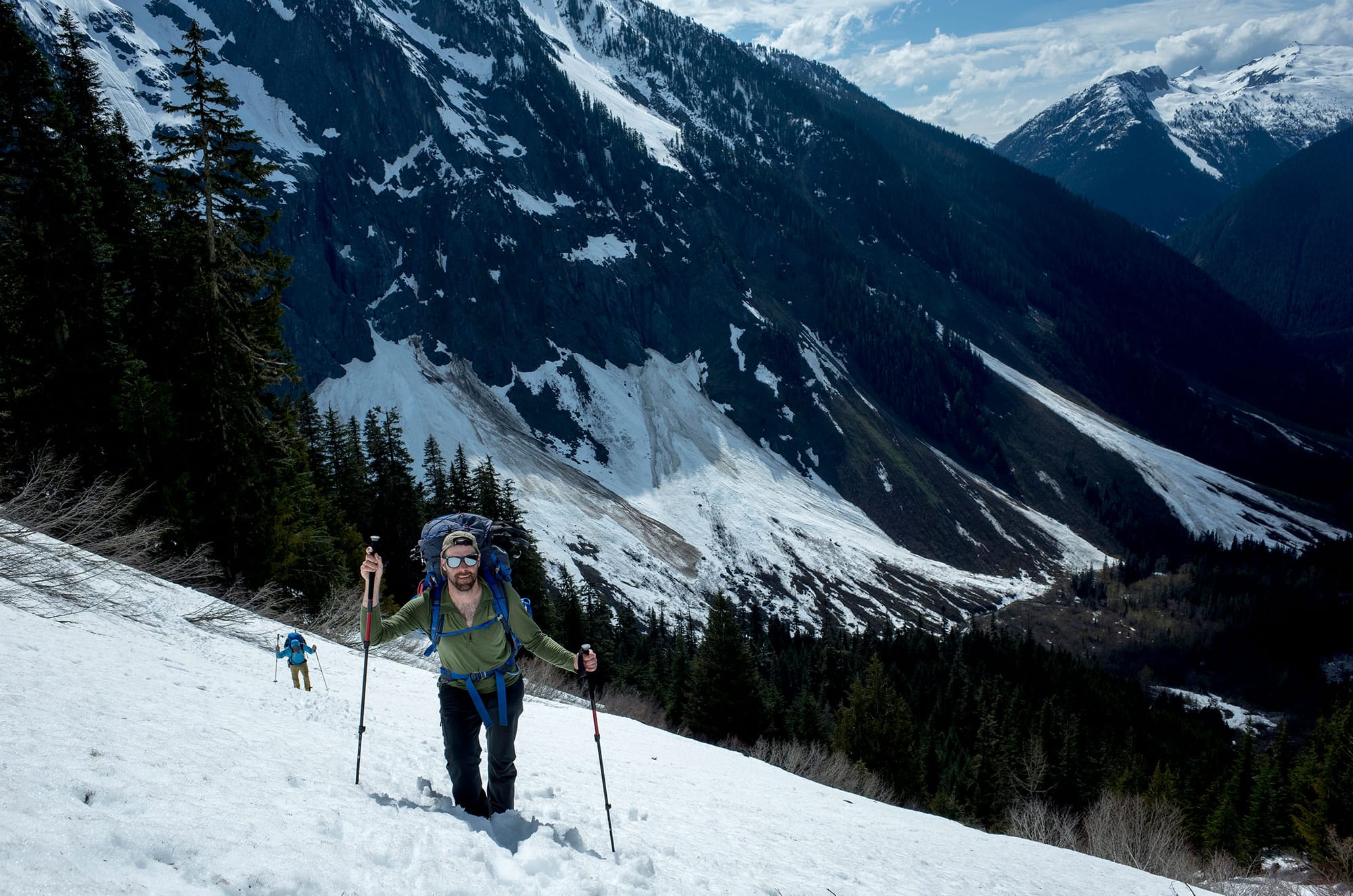
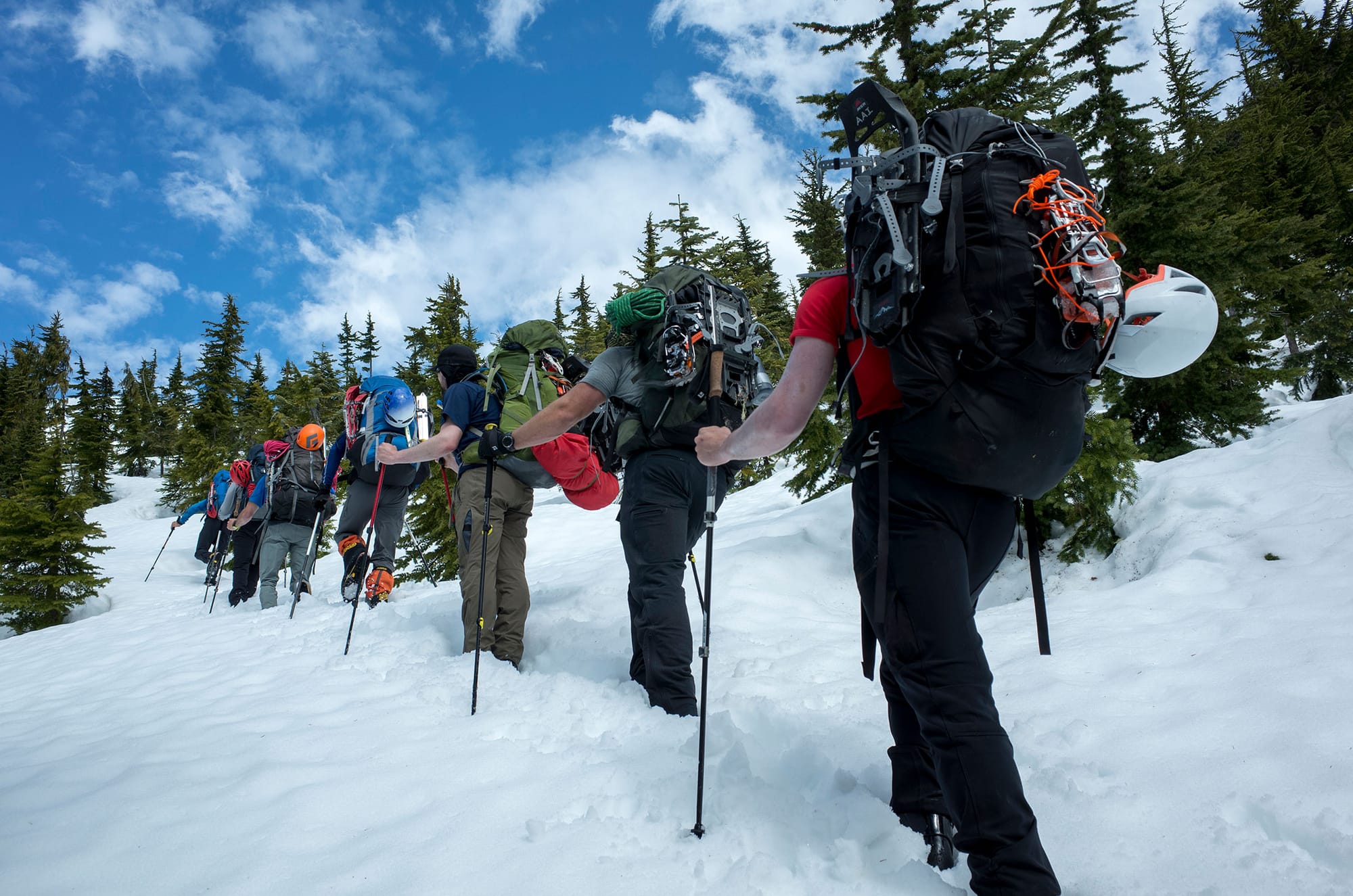
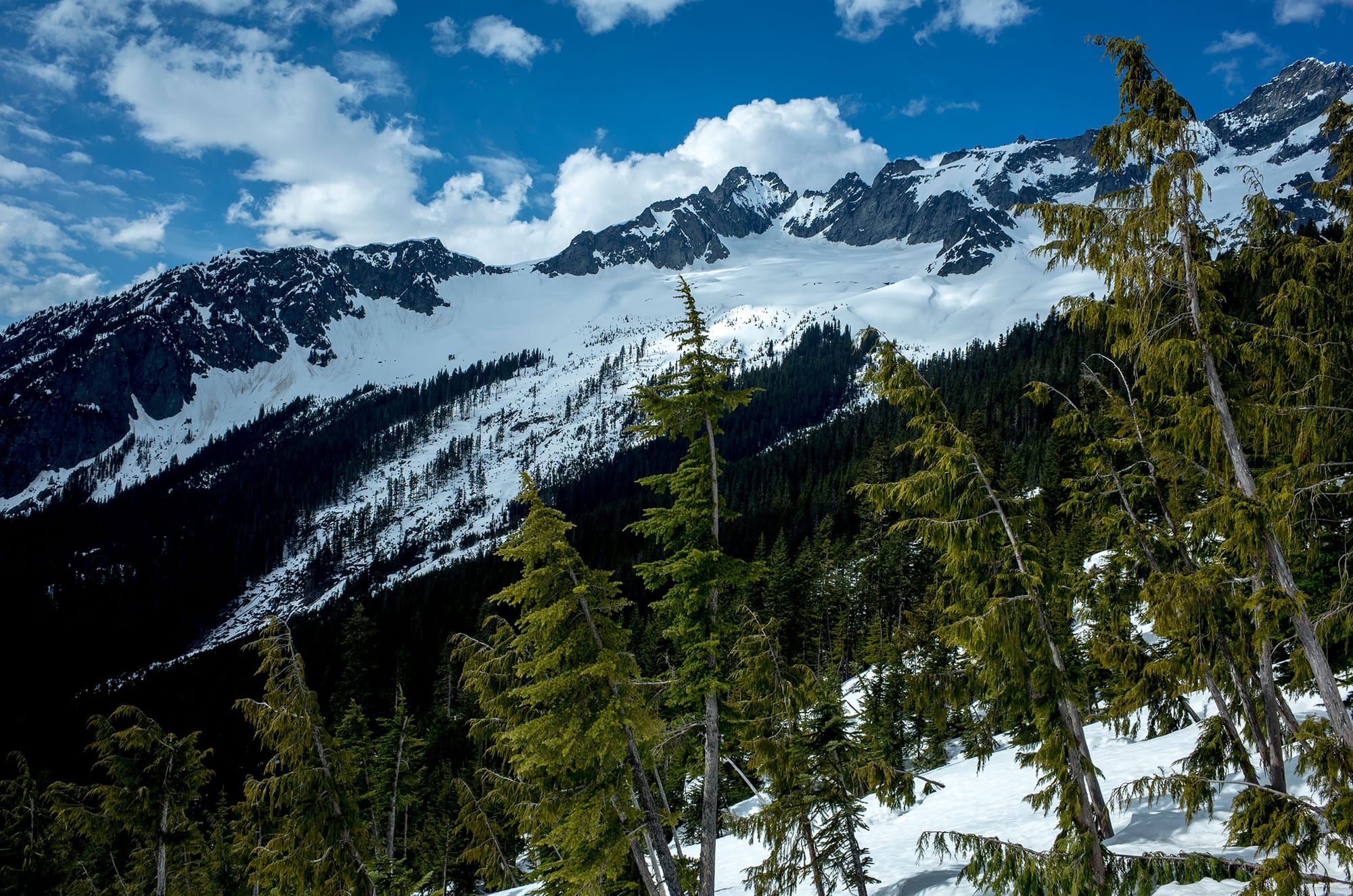
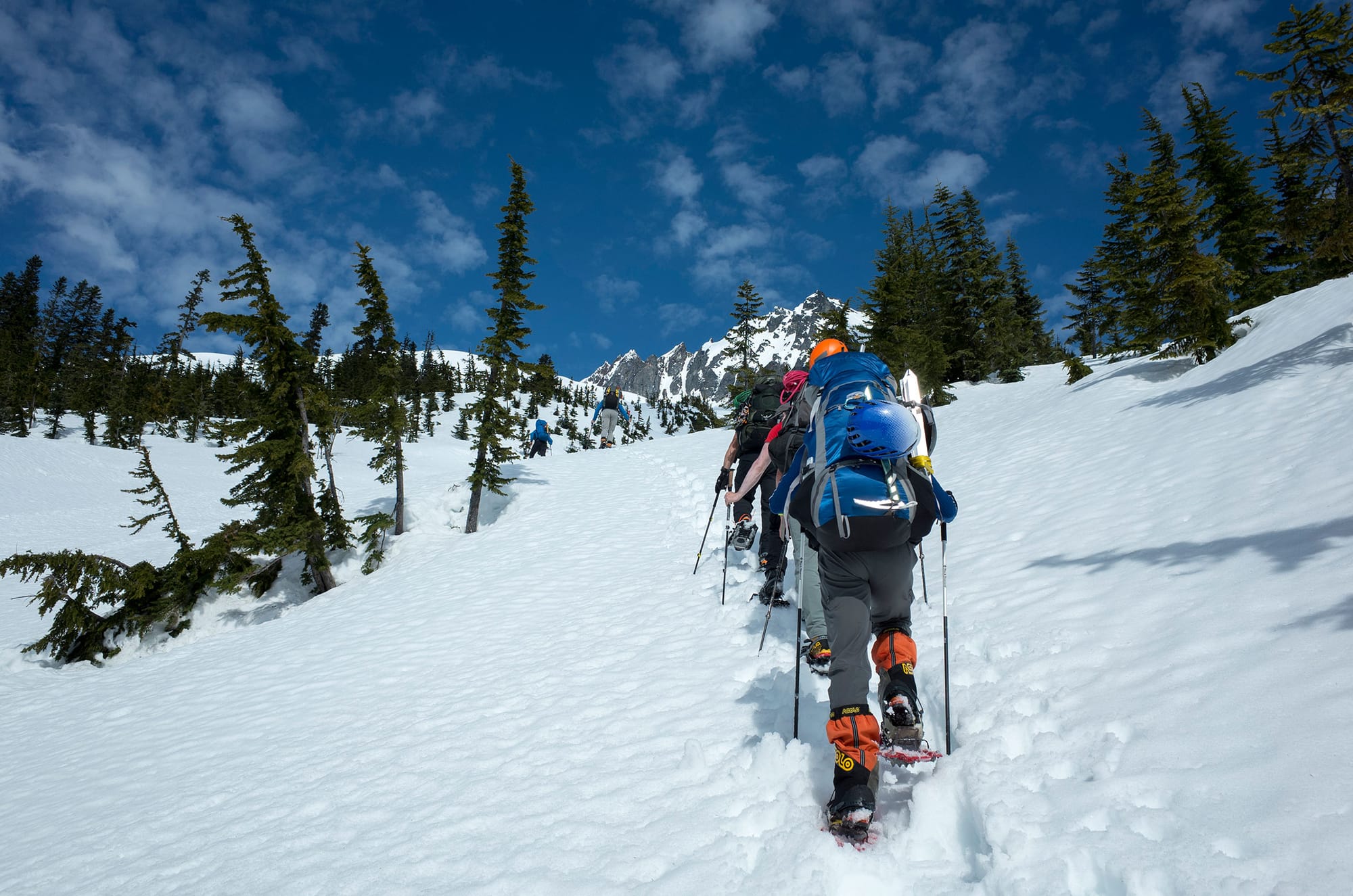
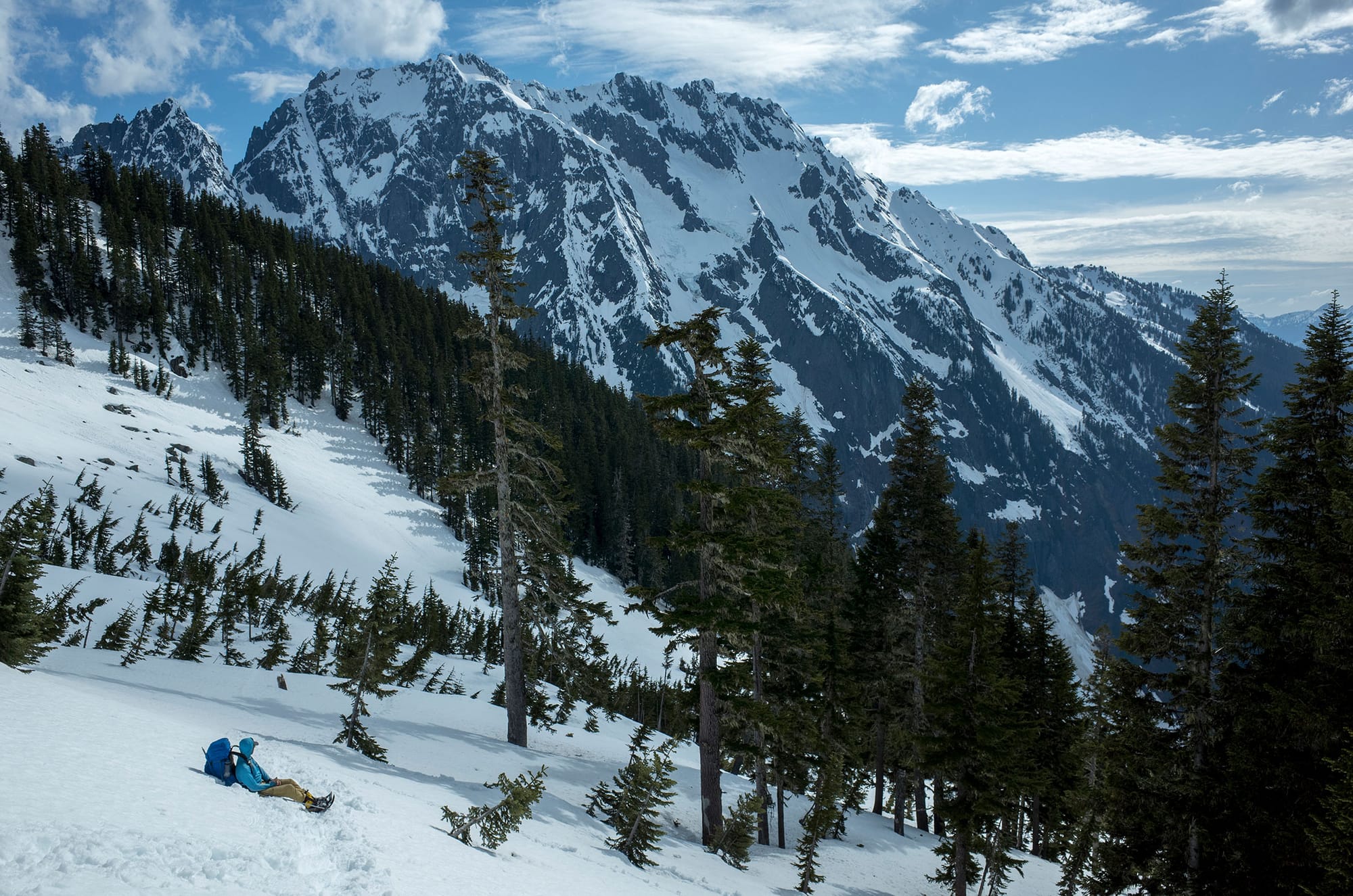
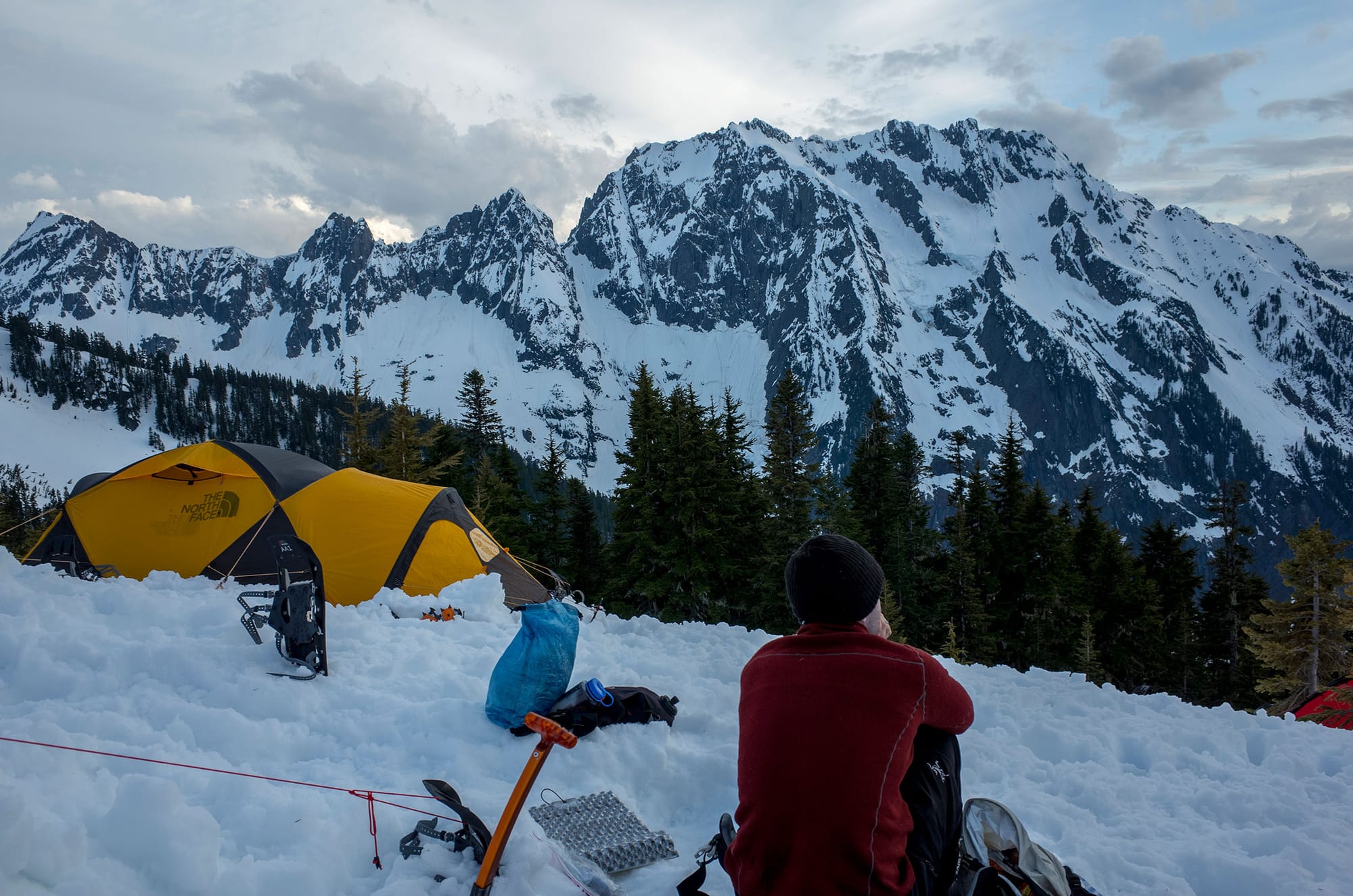

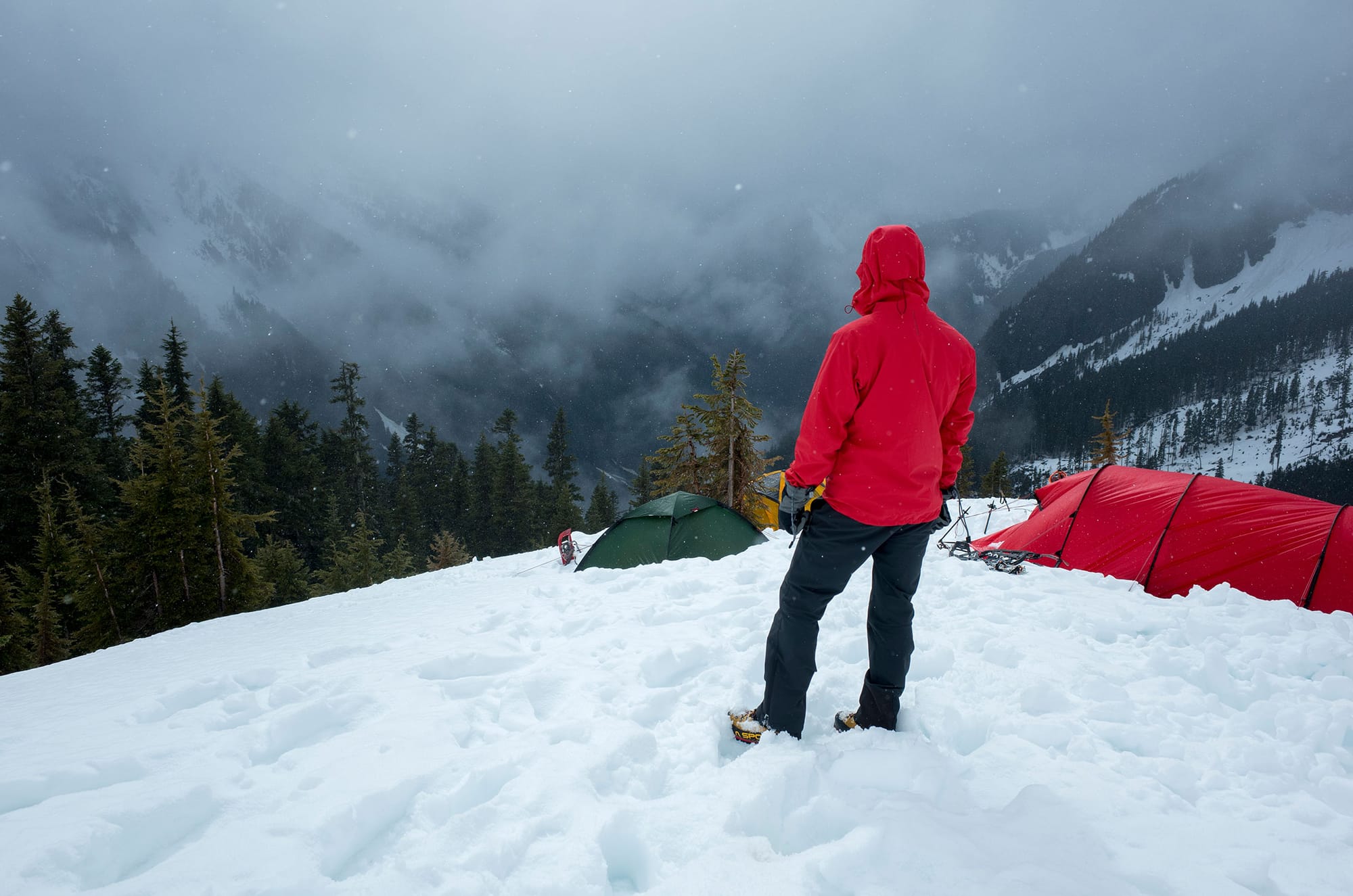
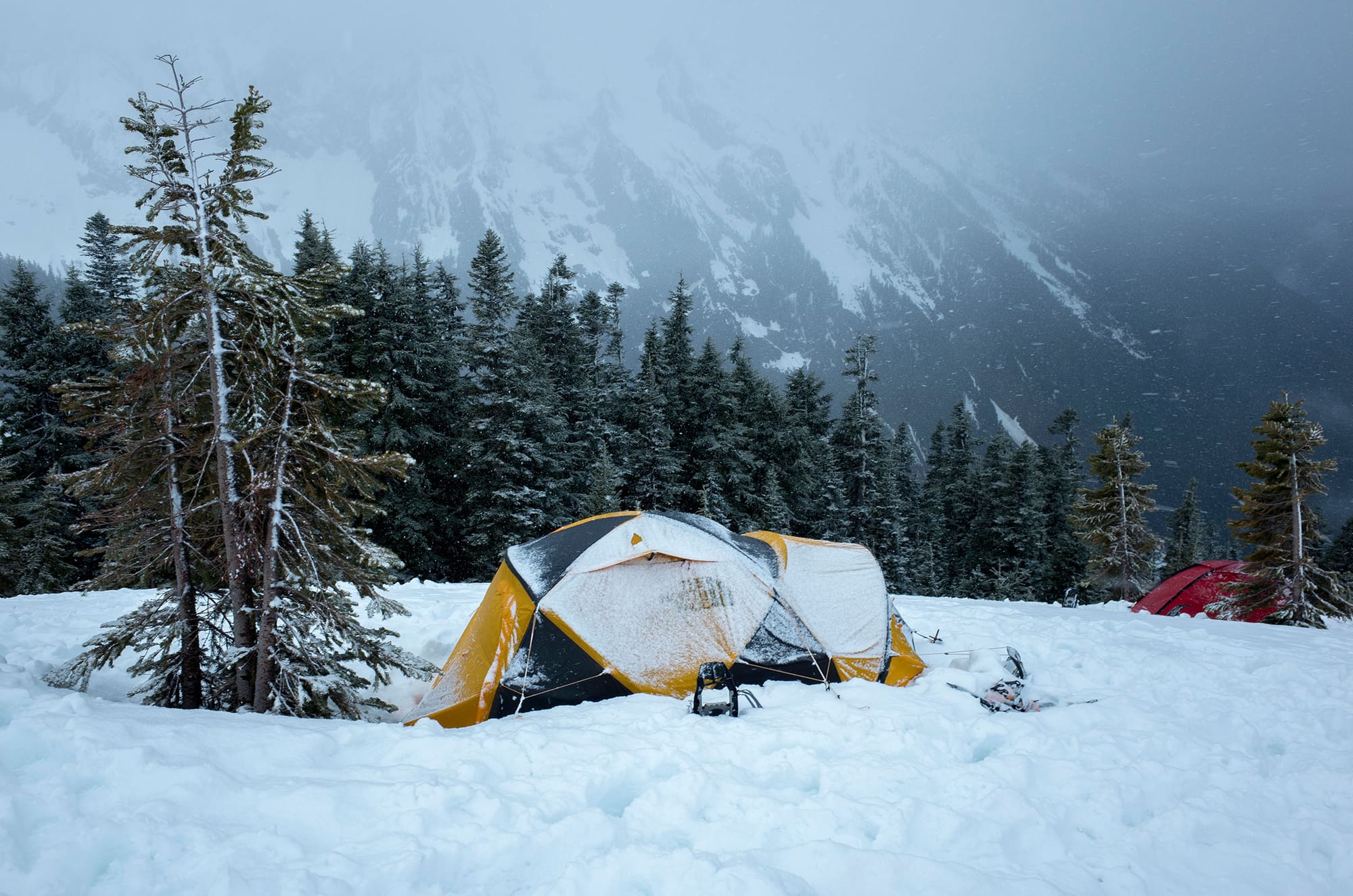
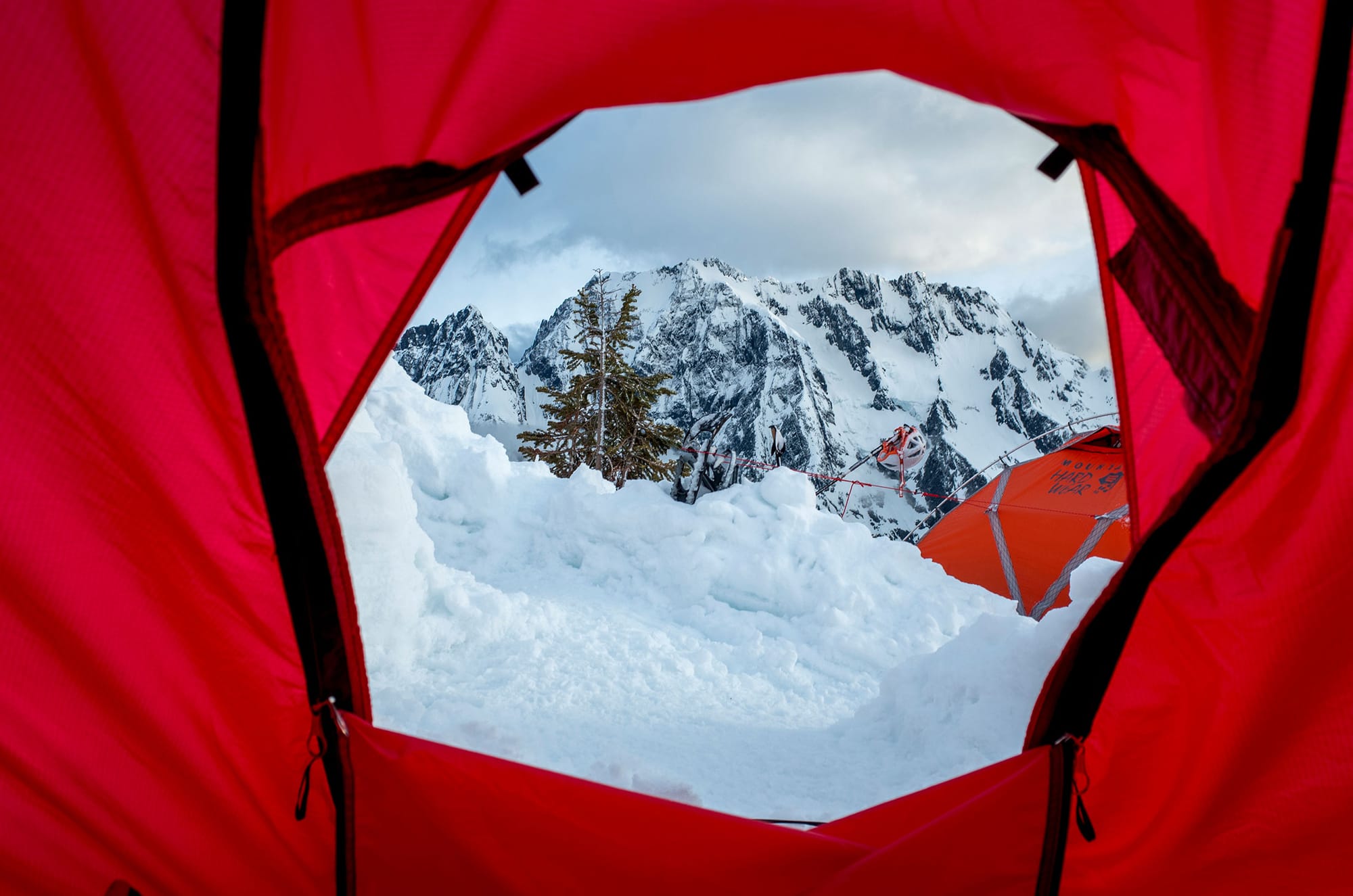
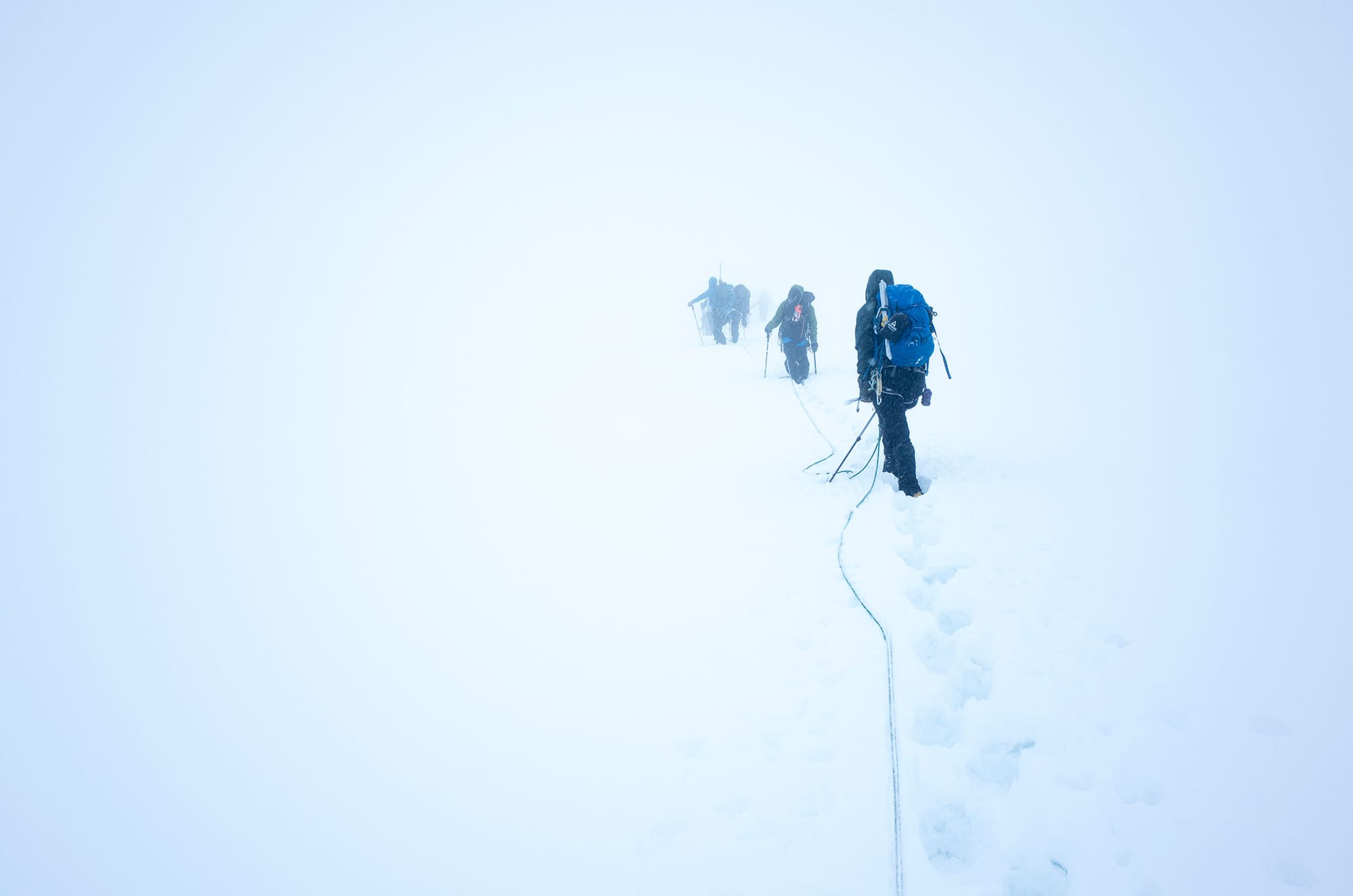
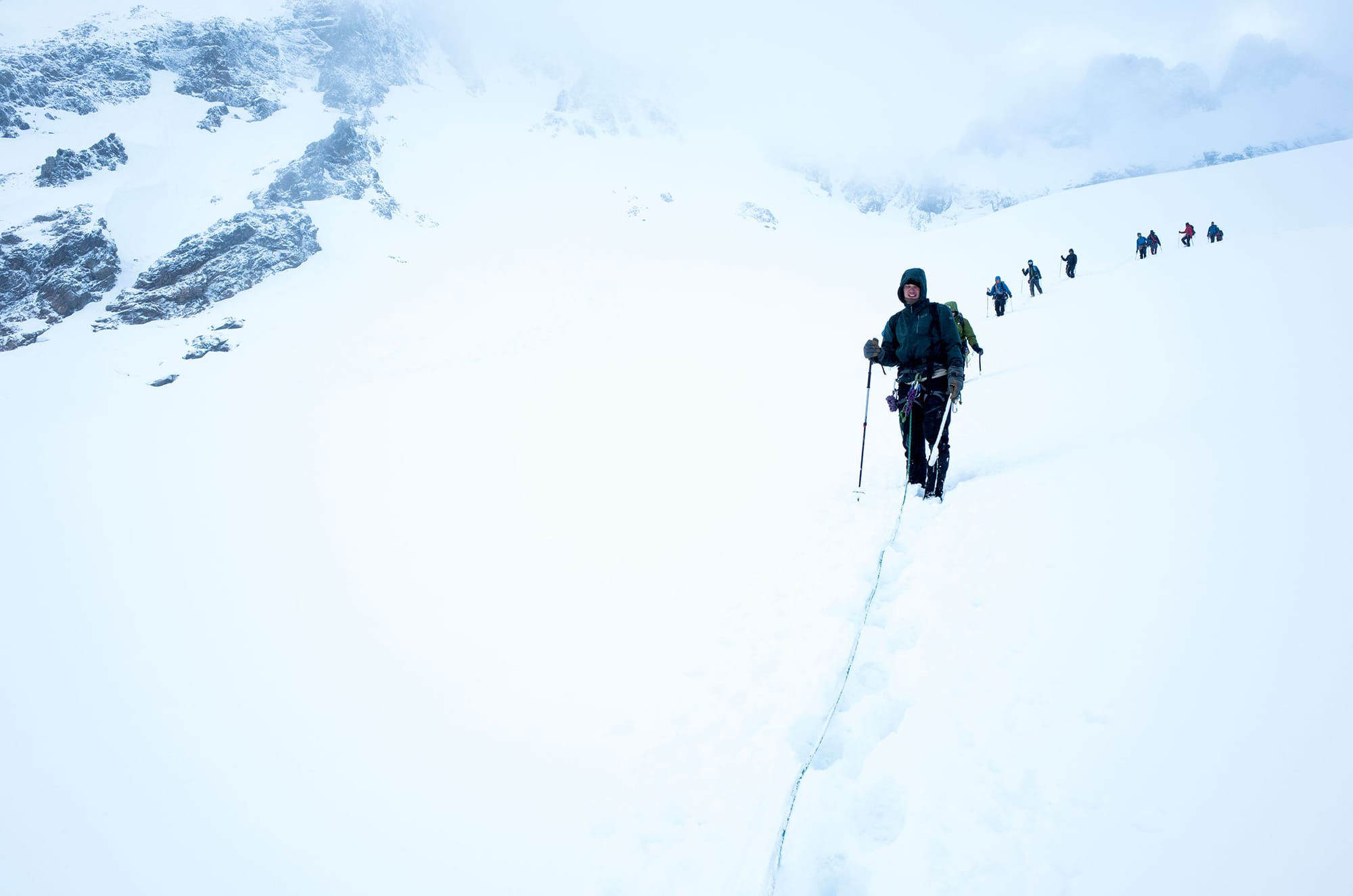
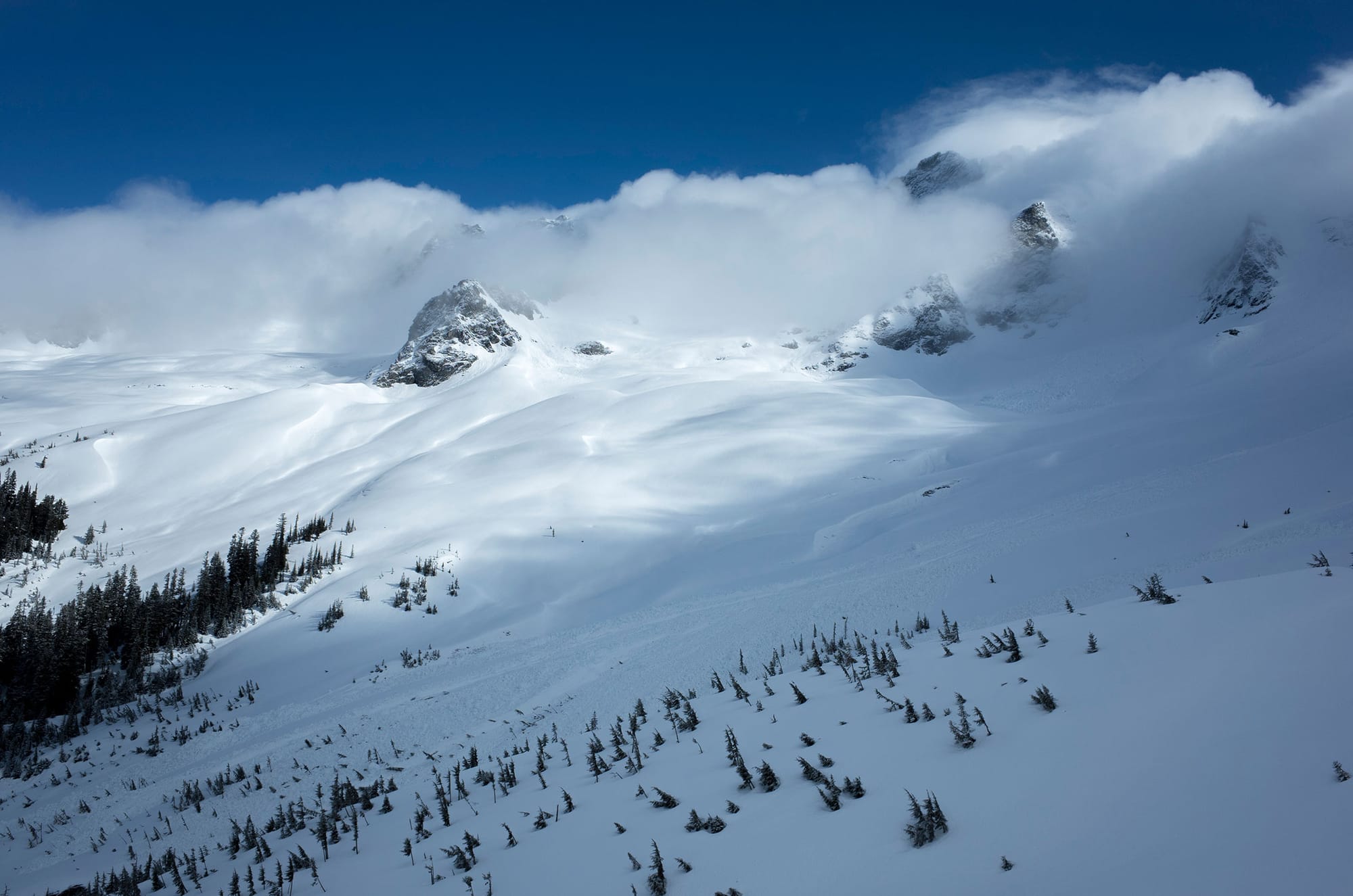
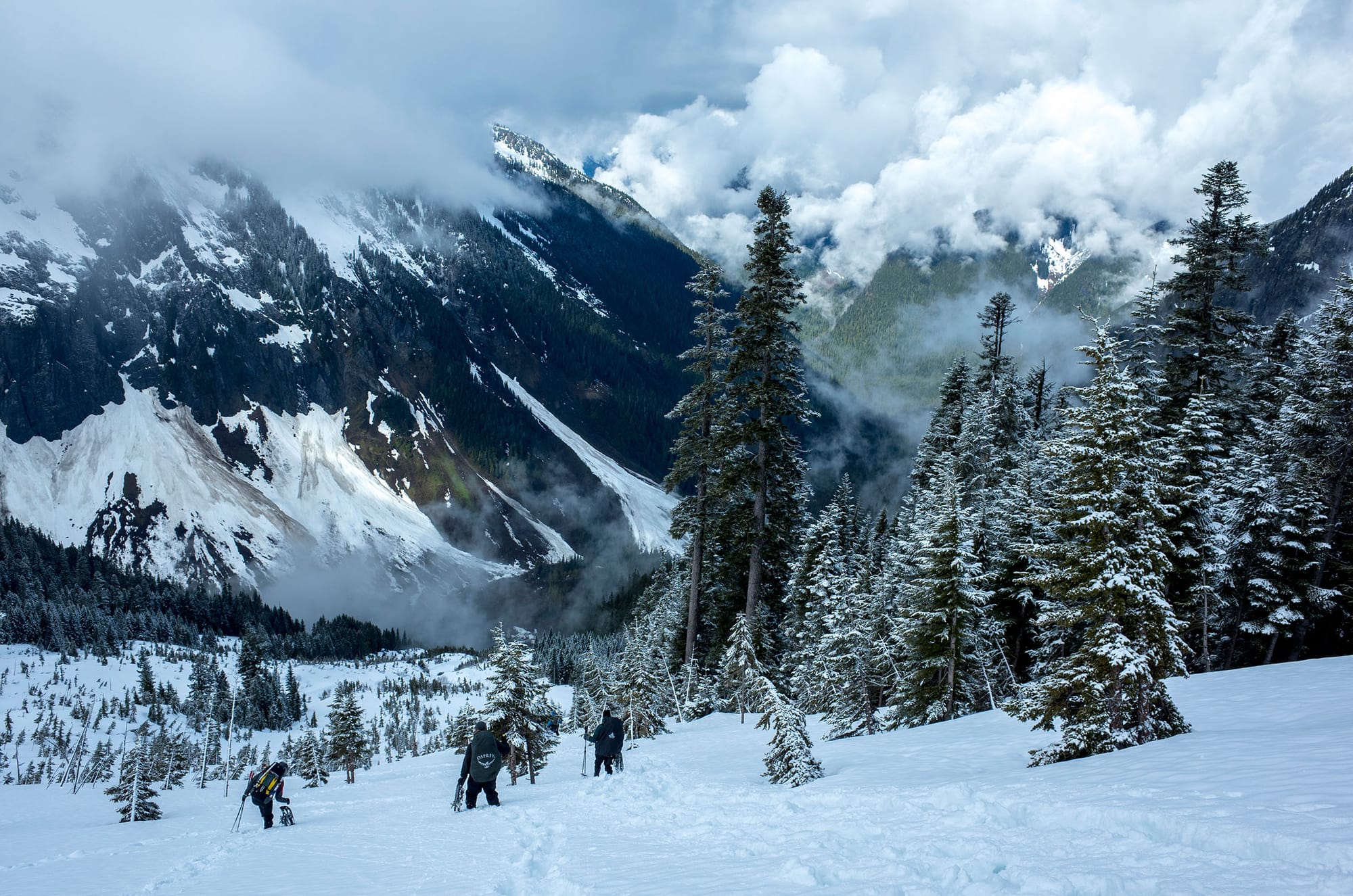
My 2min course review
Overall, I would recommend AMTL1 if you have several months of climbing experience. You need to know climbing basics – e.g. the fundamental knots, rope maintenance, how to belay and climb effectively, rope coiling, etc.– or you will not get the most value from the course. If you already have a year or more of sport or trad under your harness, you should probably jump right into AMTL2.
The main value I derived from AMTL1:
- Exposure to best practices: I could have tried to learn alpine mountaineering by cobbling together YouTube videos, books, and just experimenting. However, I knew that perfect practice makes perfect. I wanted to get exposed to best practices. The AMTL1 course accelerated my learning process by months, if not years. It introduced me to a variety of alpine mountaineering techniques by experienced guides that I can now practice more perfectly with my friends.
- The network: I met a variety of people with whom I can now go mountaineering. Because I know these individuals received the same training, I can feel comfortable relying on them in challenging environments.
- Snow camping experience: Prior to this trip, I had camped in cold and snowy conditions but never on top of five feet of snow. What was new to me: digging trenches for the tent's snow stakes, building a boot box under the vestibule where we could sit and cook, boiling snow for water, and using wag bags.
- Lots of rope instruction: Going into the course, I had minimal rock climbing experience. I had top roped in the gym maybe four or five times and been outdoor top roping twice. The rock portion of the course gave me more opportunities to climb and taught me how to belay and clean for a leader.
What could have been better:
- Greater reinforcement of complex techniques: AMTL1 was definitely a crash course in mountaineering. There was almost too much to learn, especially given my limited rock climbing experience. It would have been great if we could have had additional practice with the more complicated techniques – e.g. setting up a crevasse rescue system and knot passing.
- The addition of at least one more instructor: The instructor-student ratio for most of the course was 1:4.5. Overall, I thought the instruction was great, but on the days when an additional one or two instructors were present, it was far better. I realize this might raise the cost of the course, but it would probably be worth it.
- The weather: Well, yeah, it's the Cascades.
